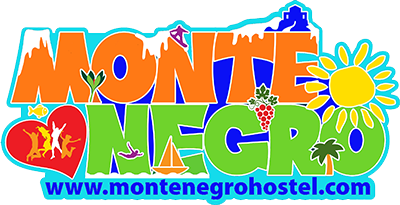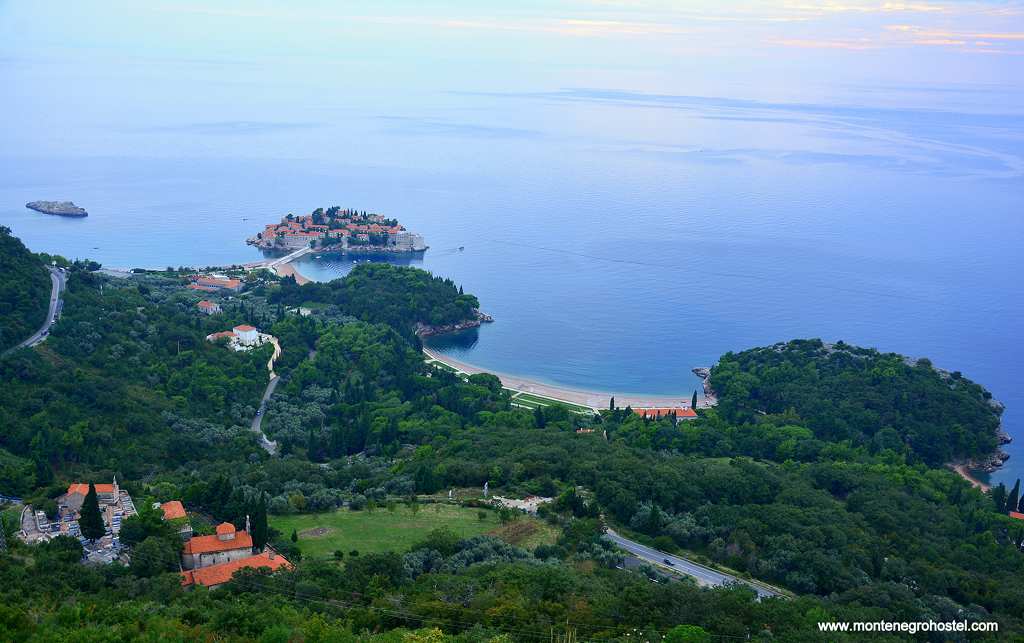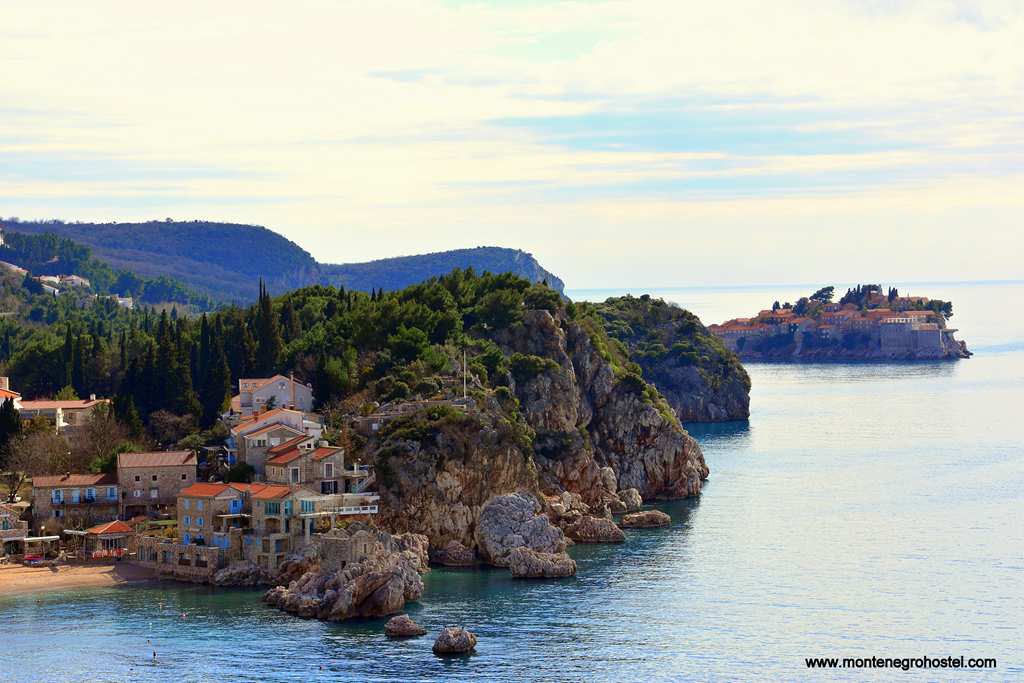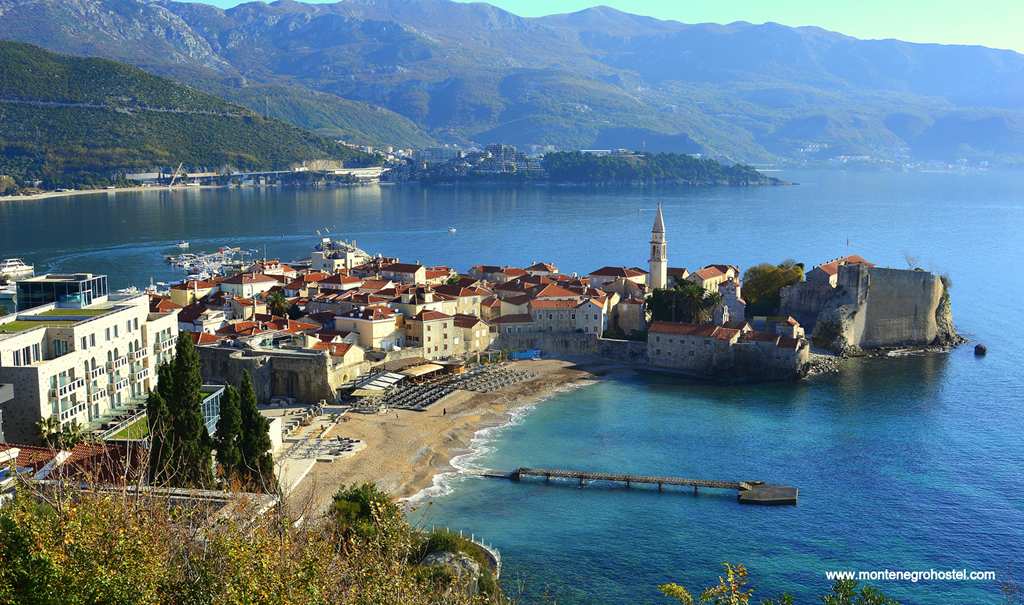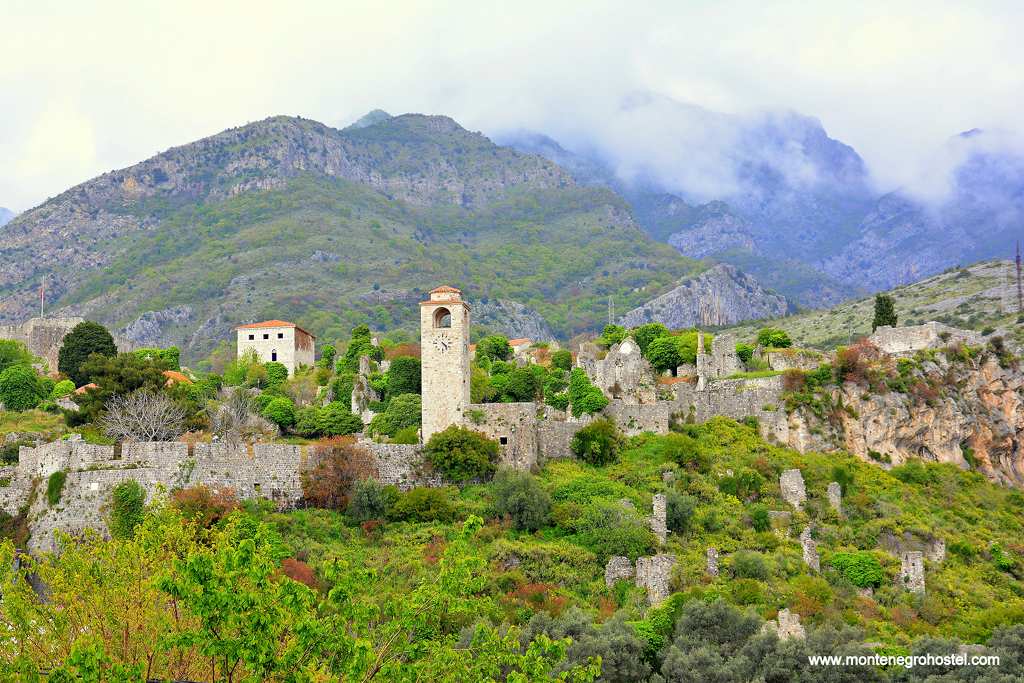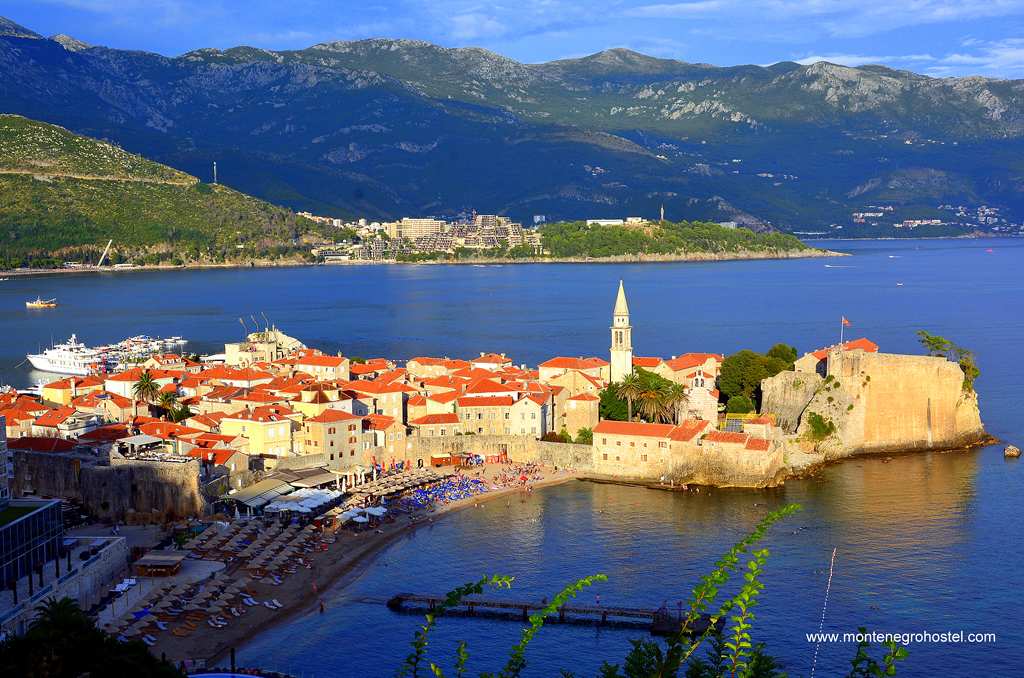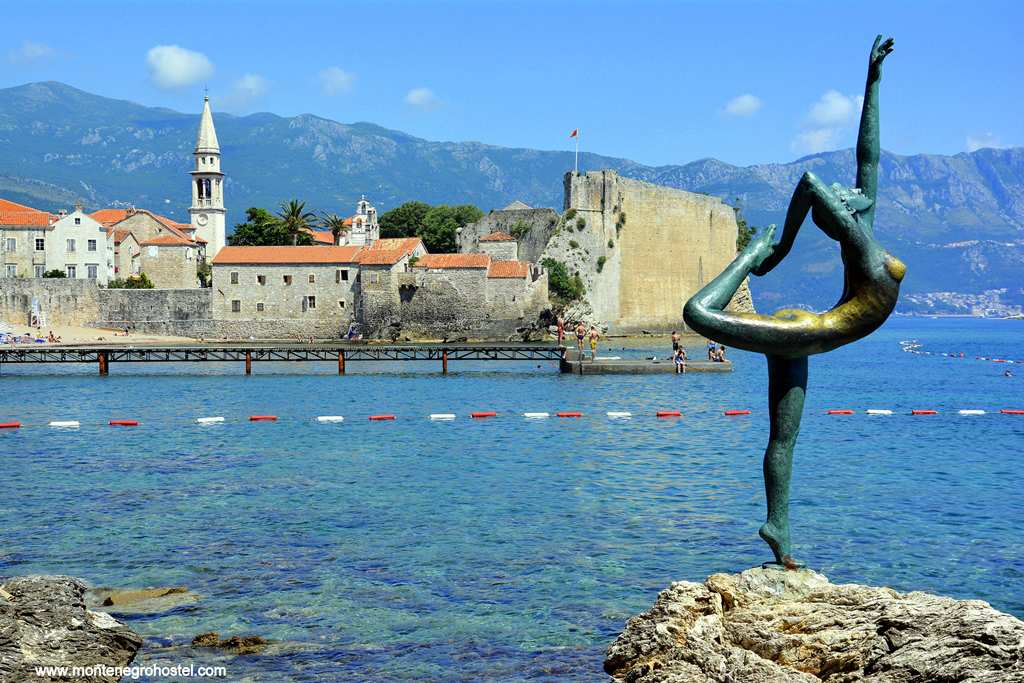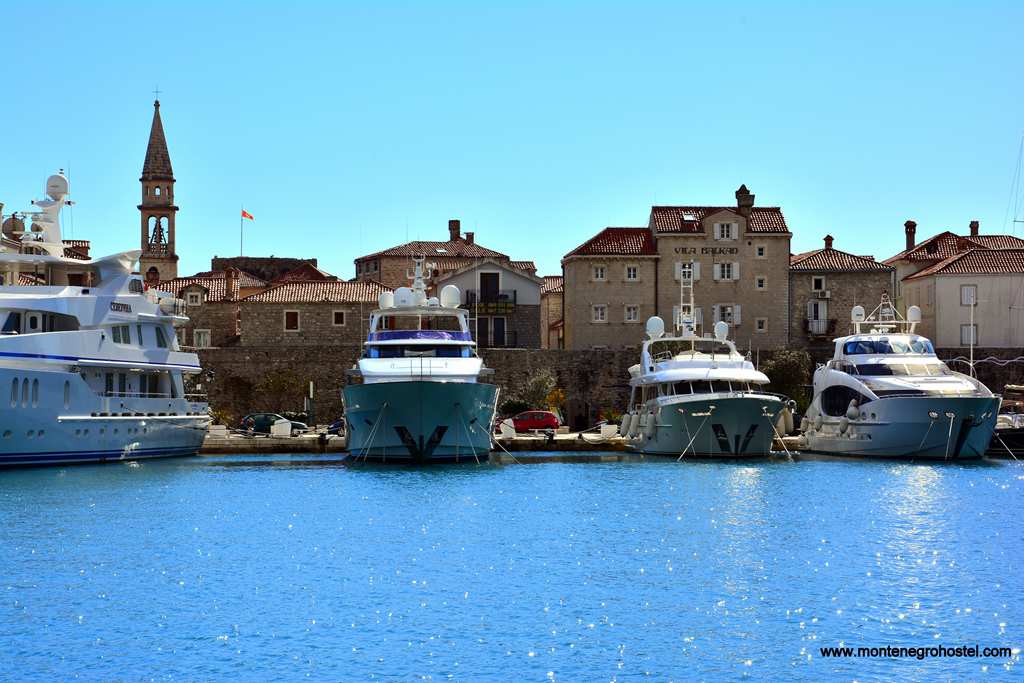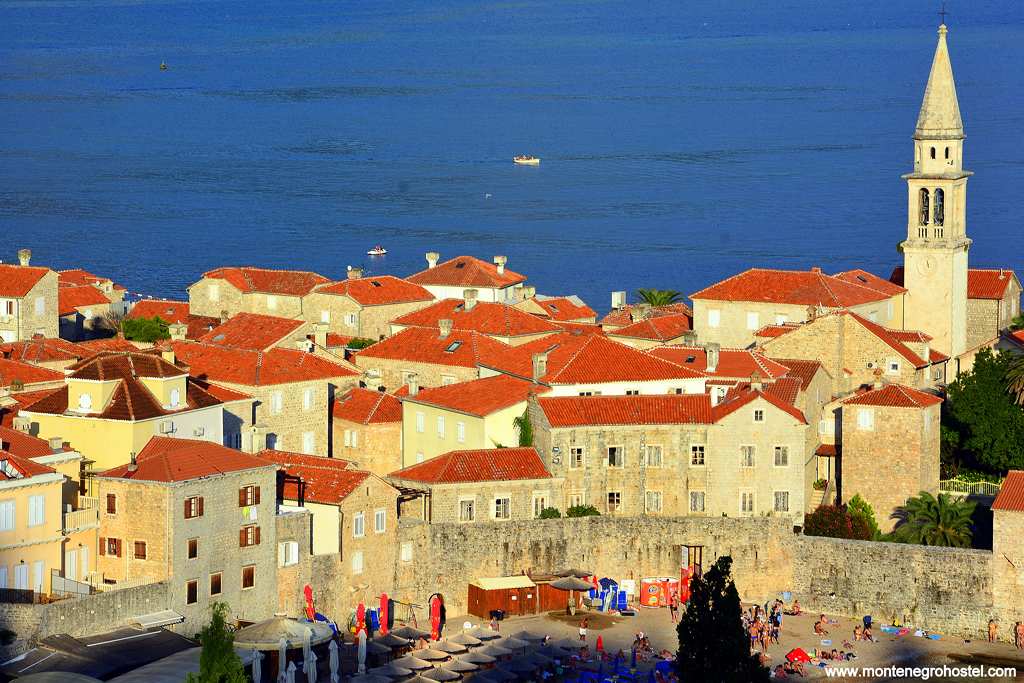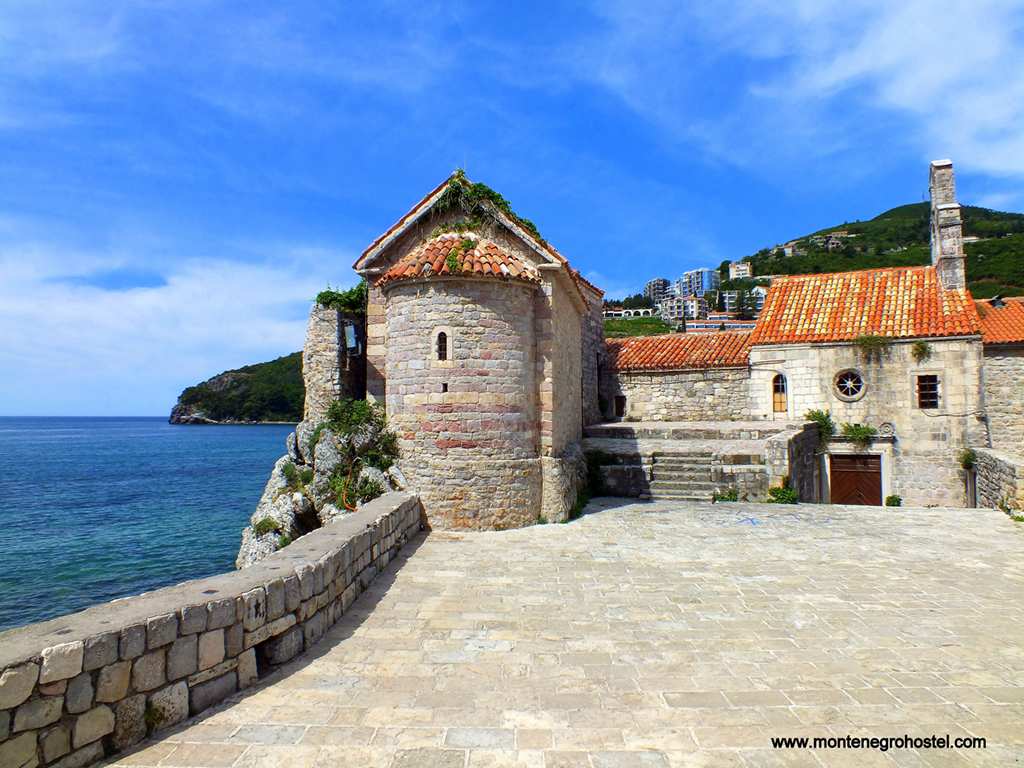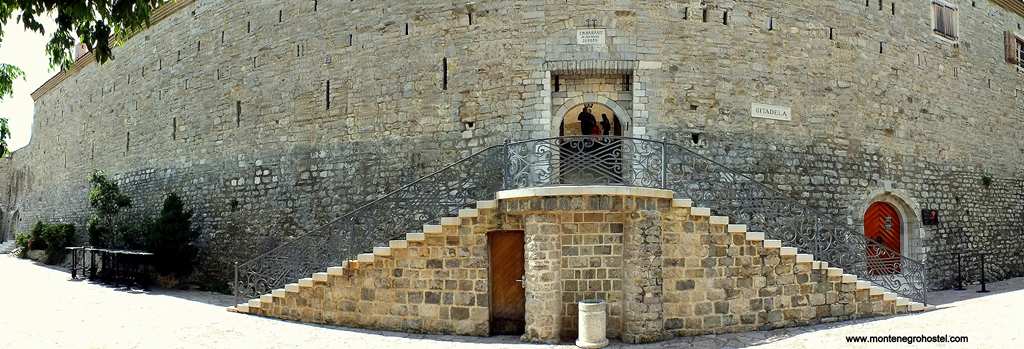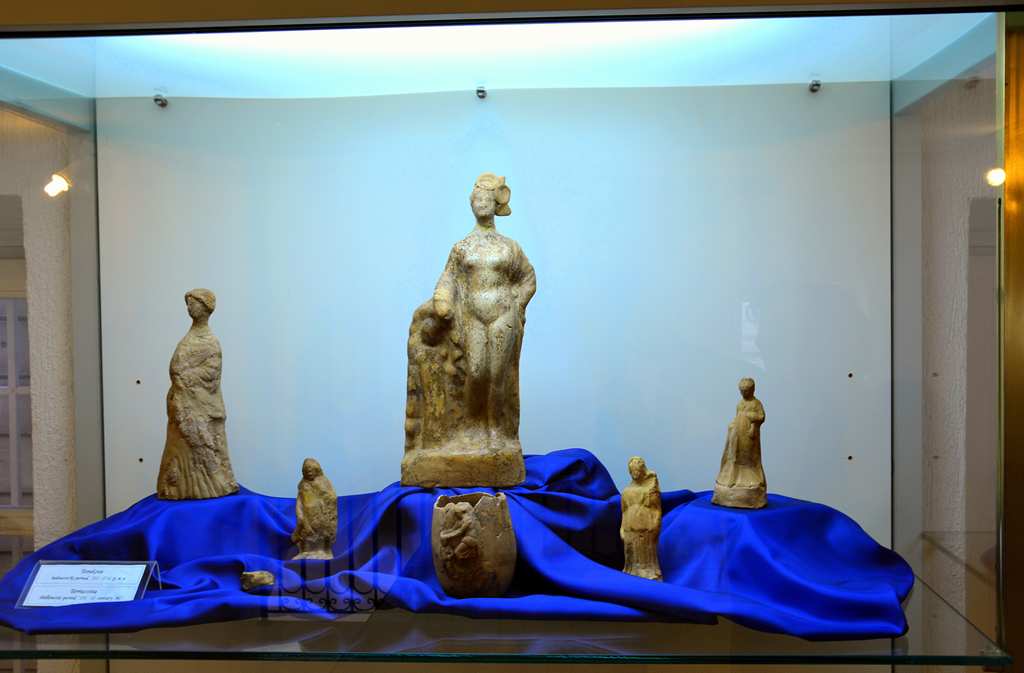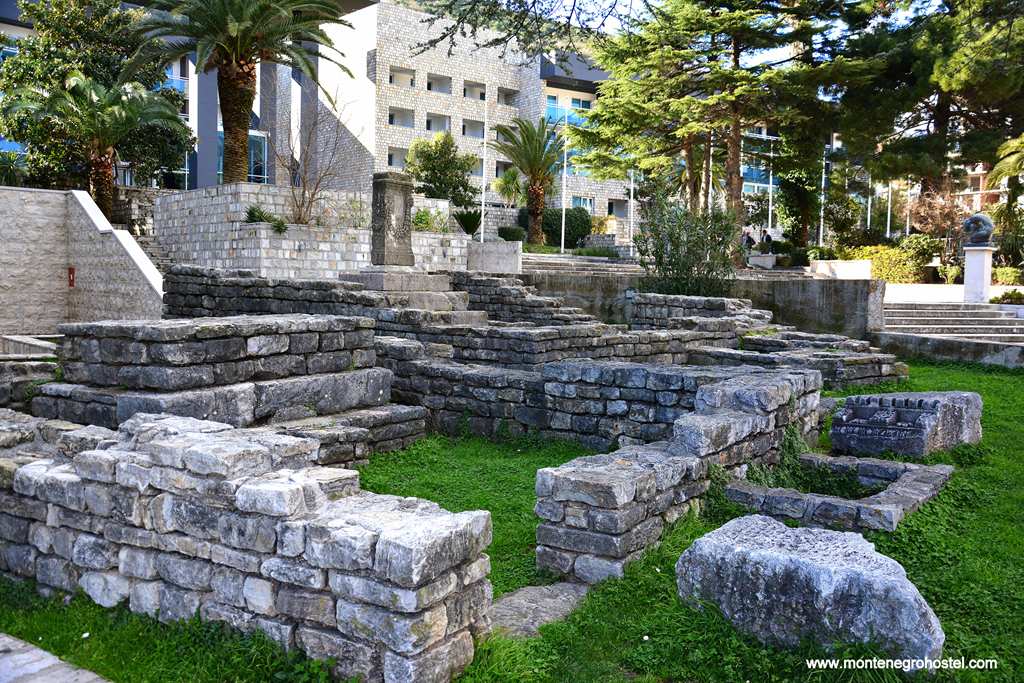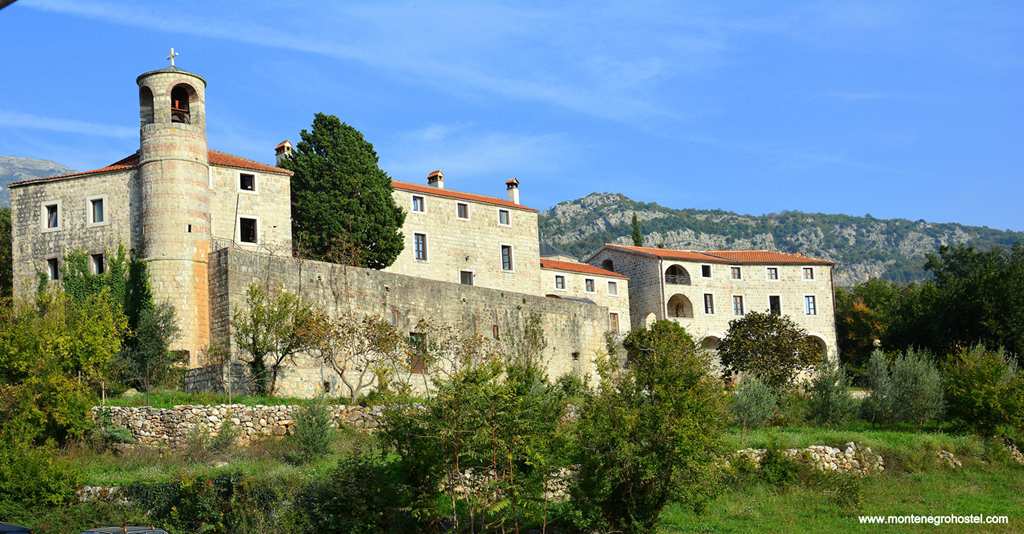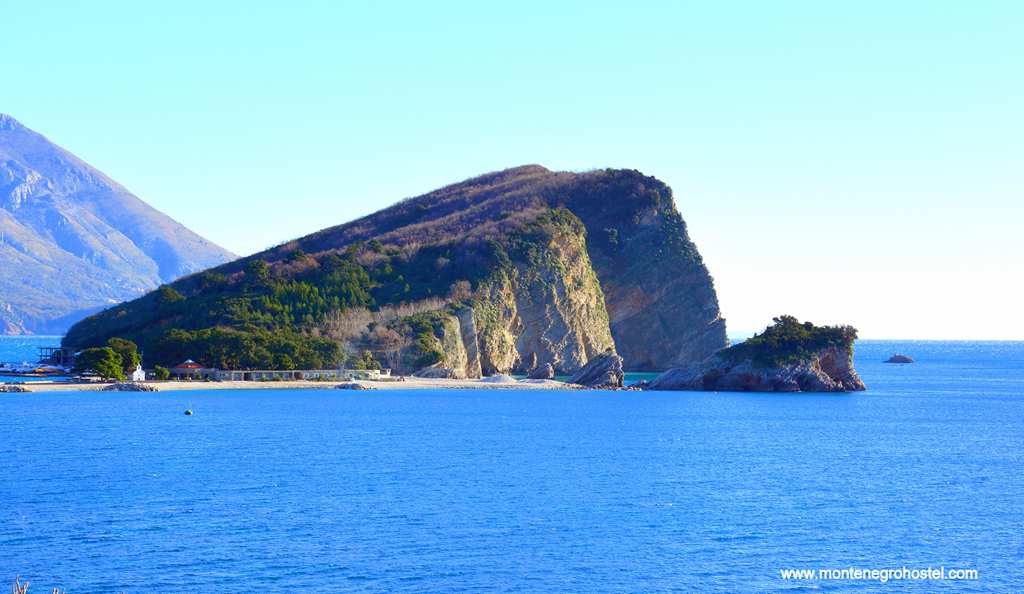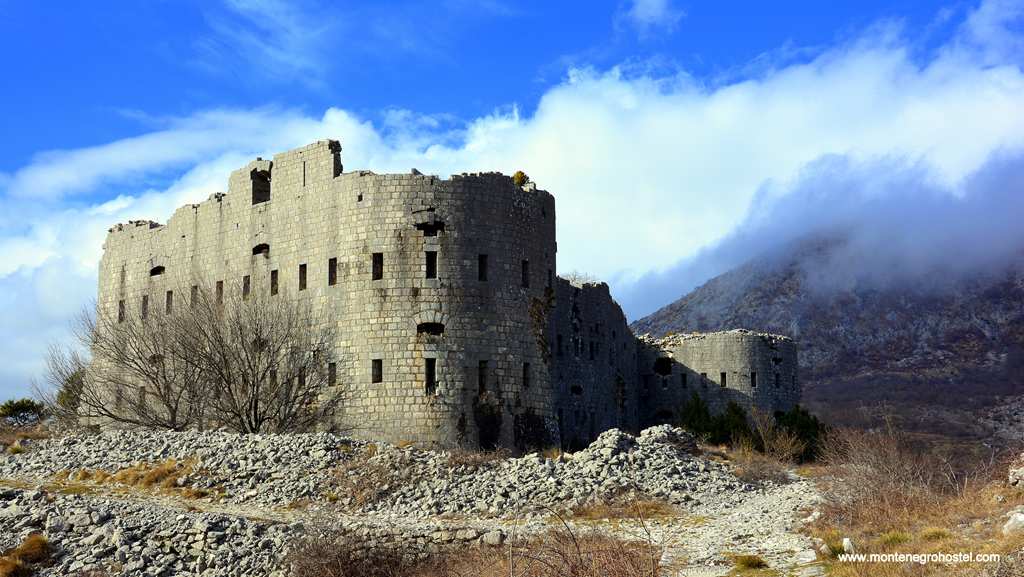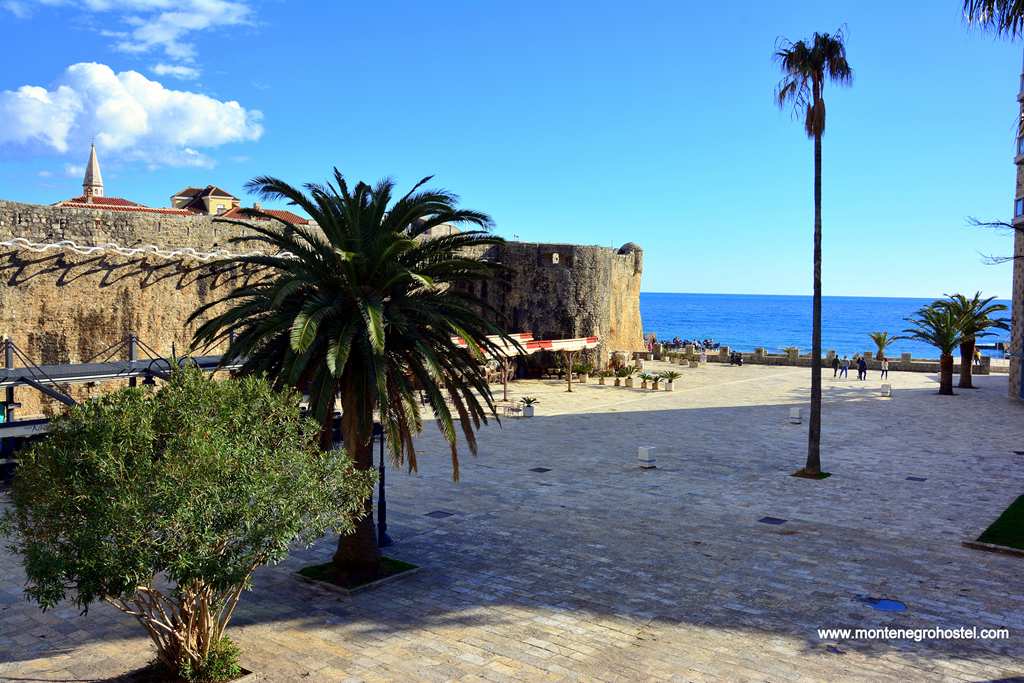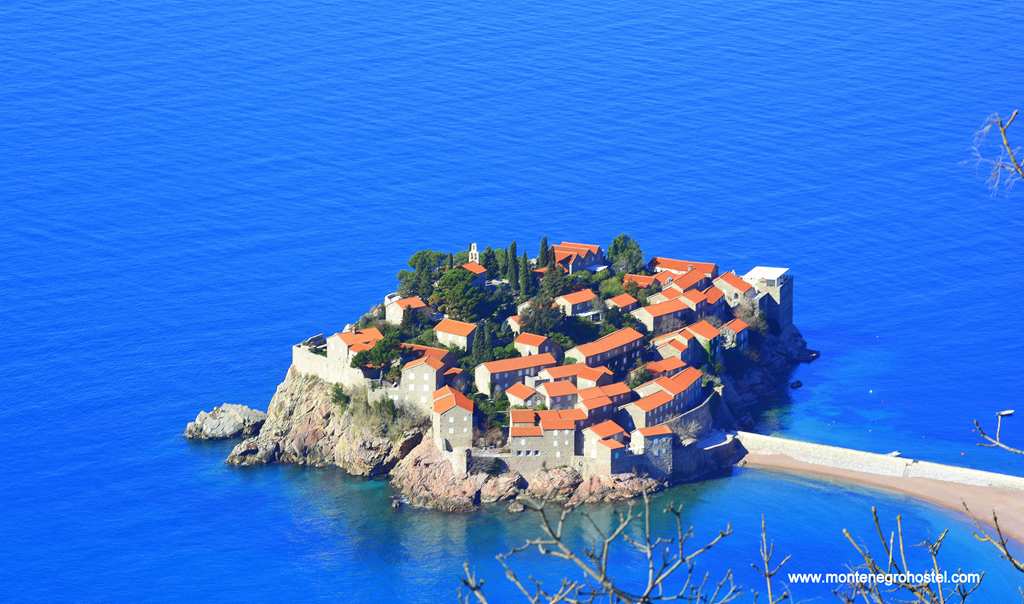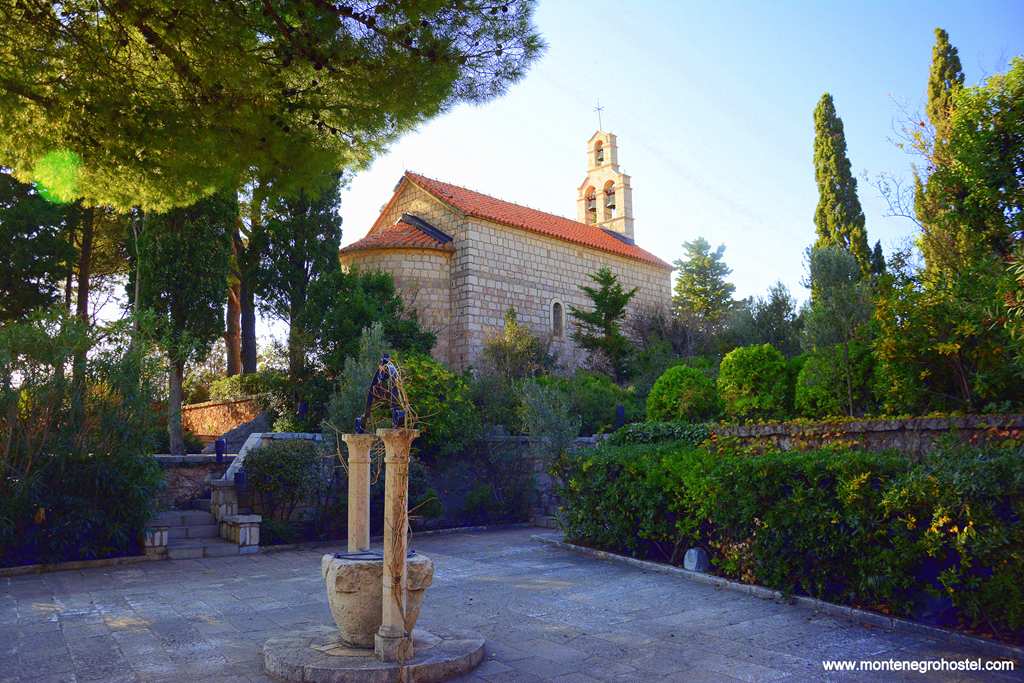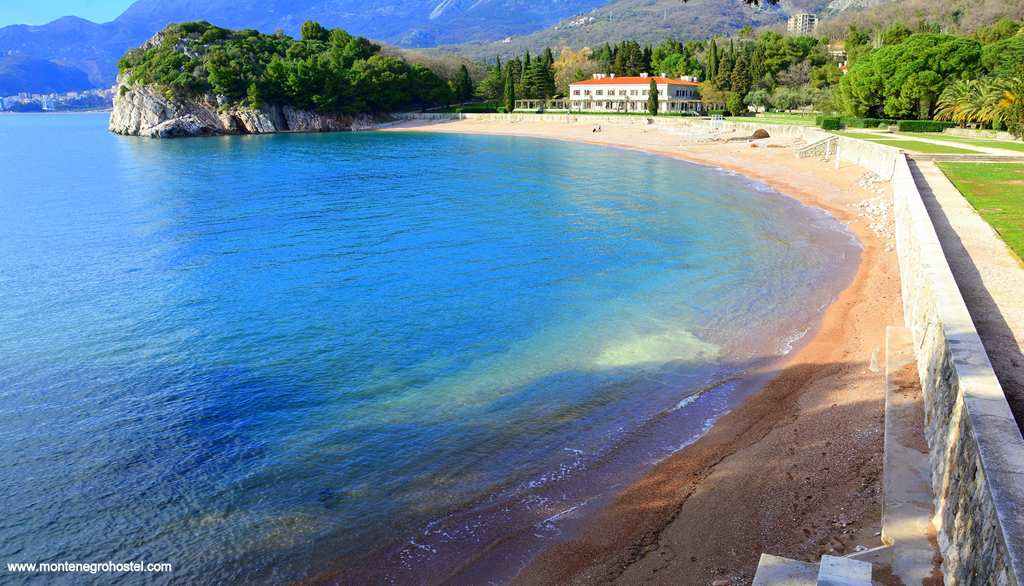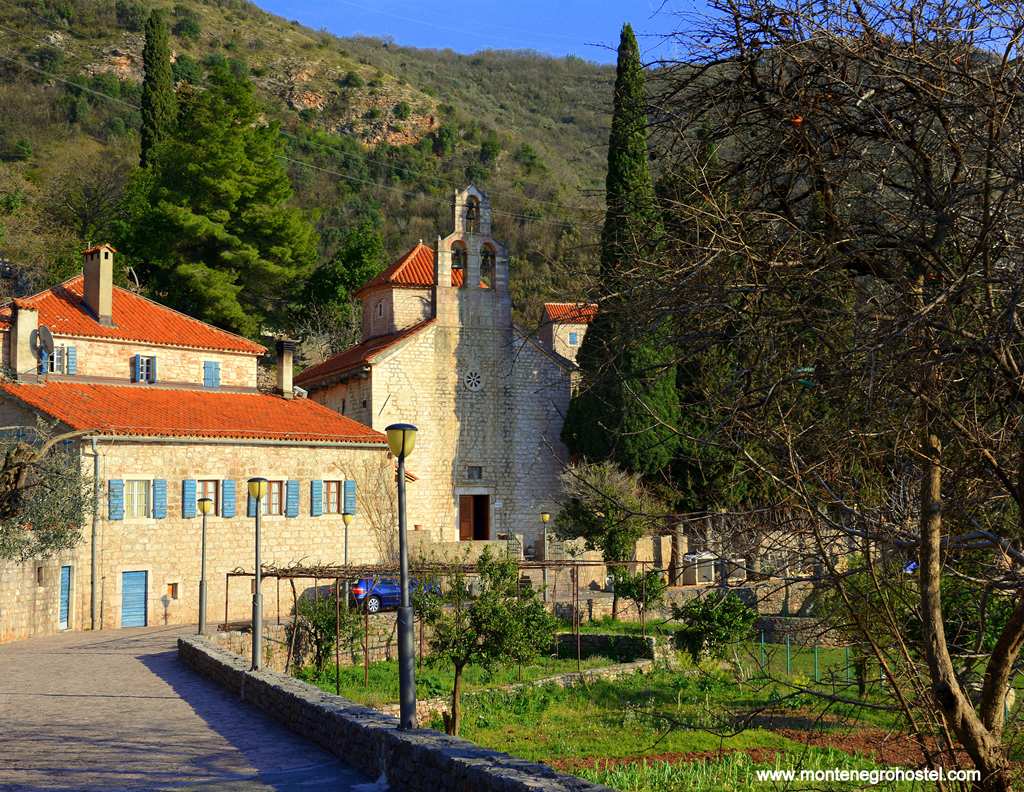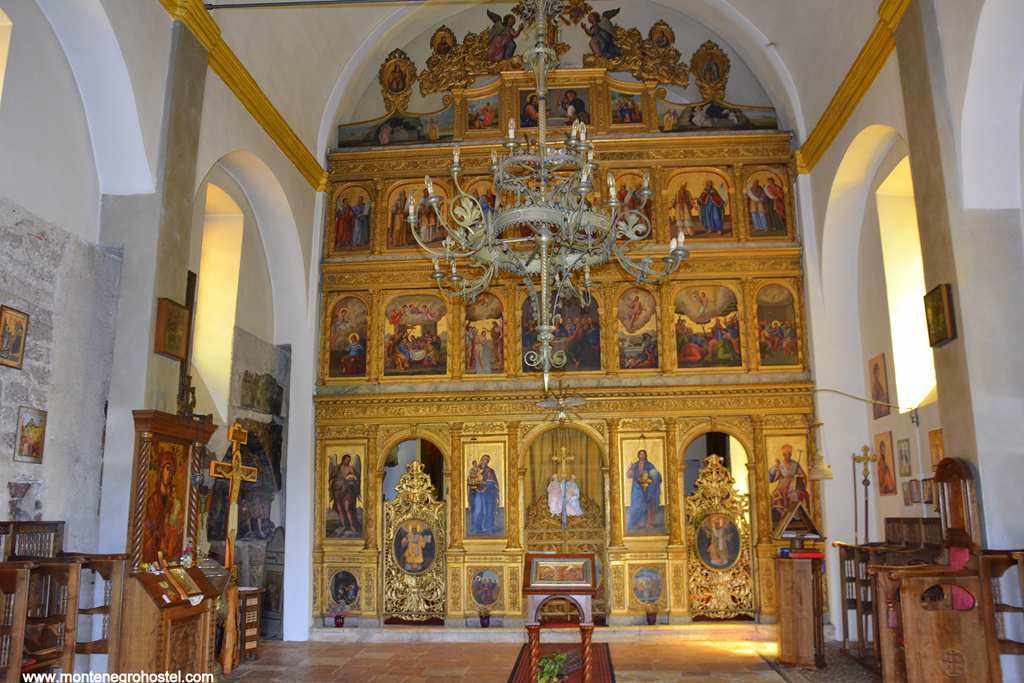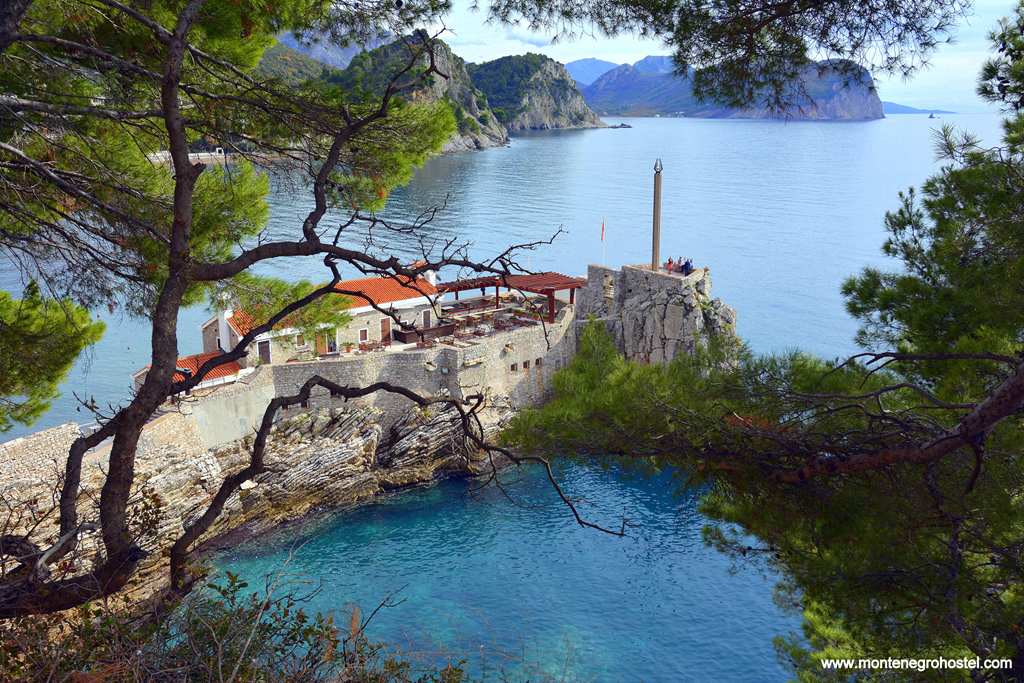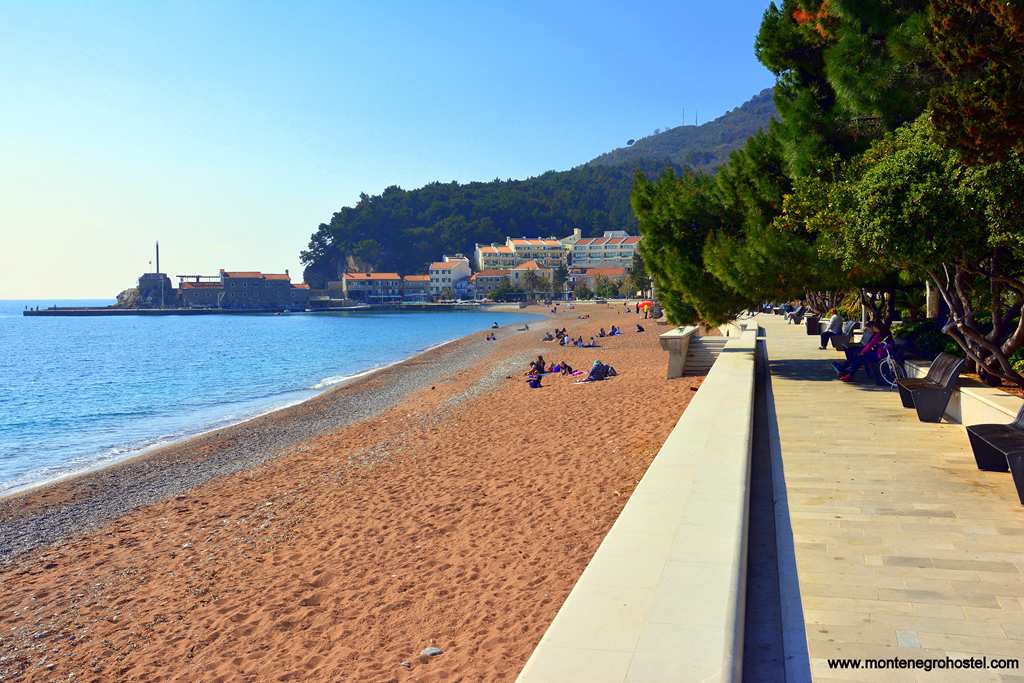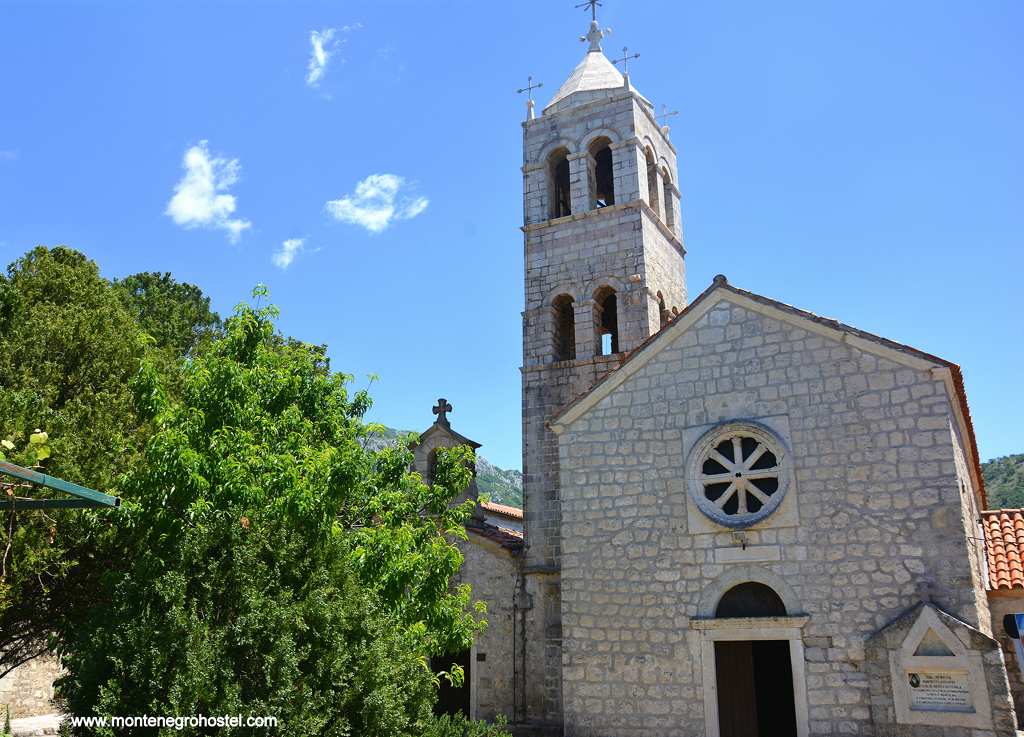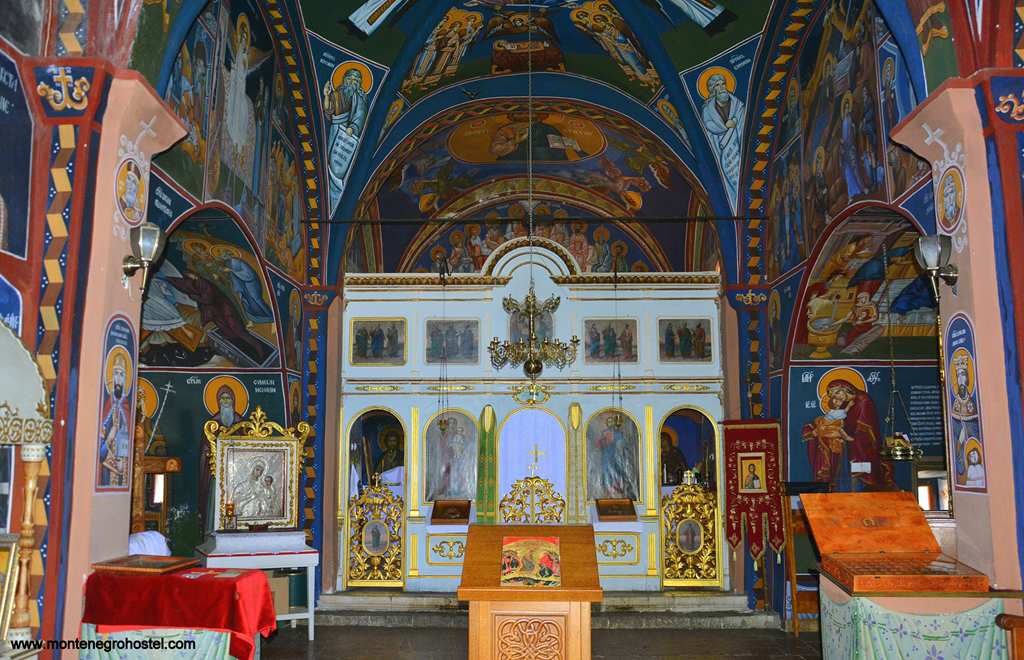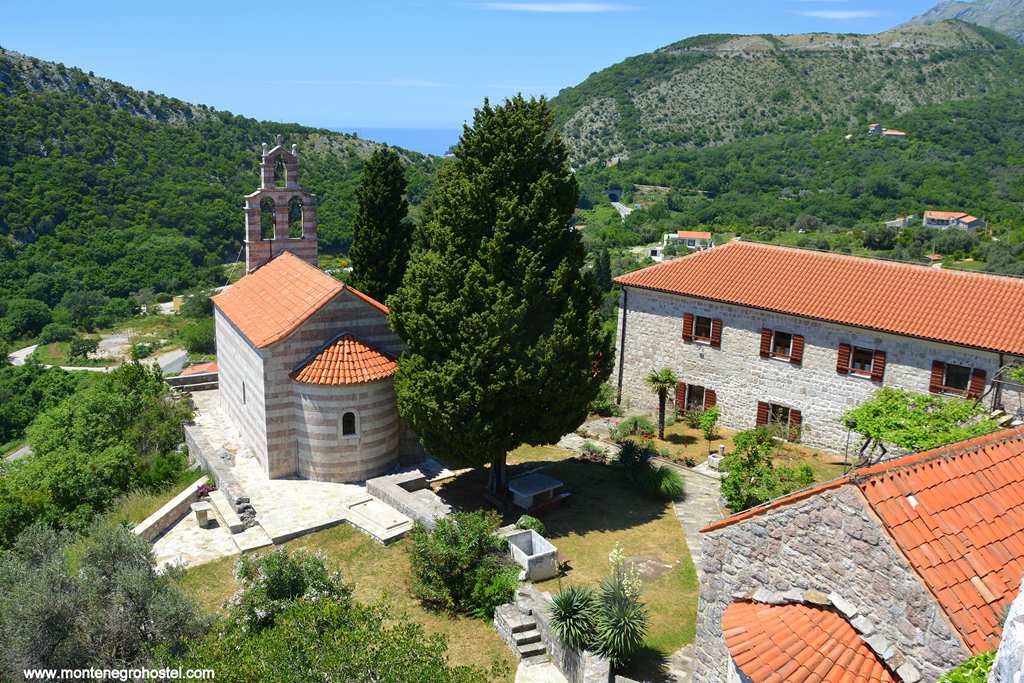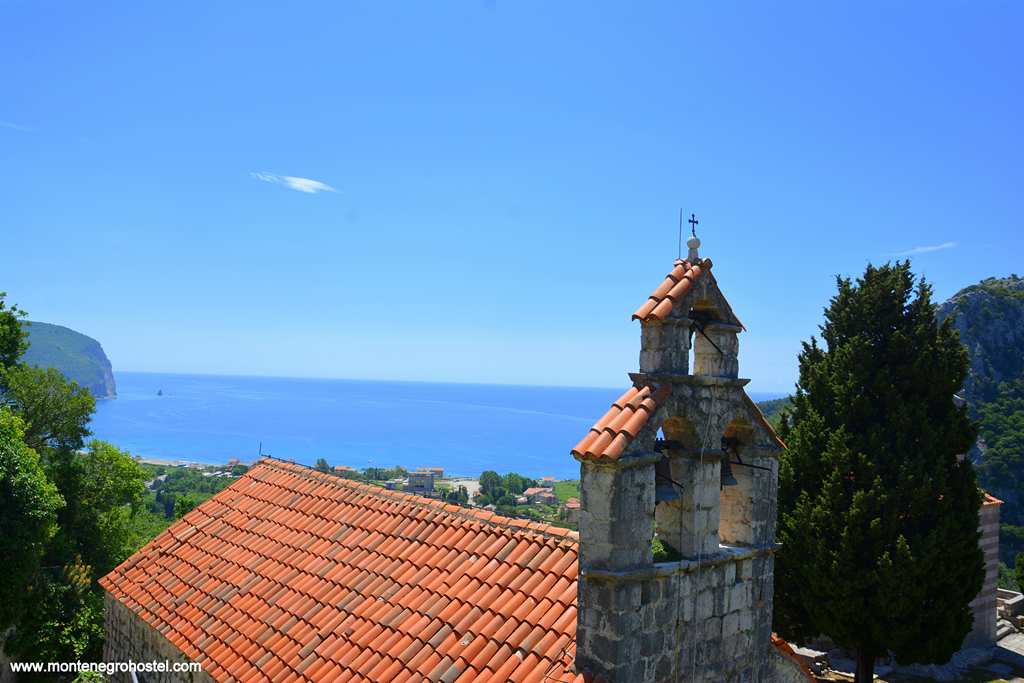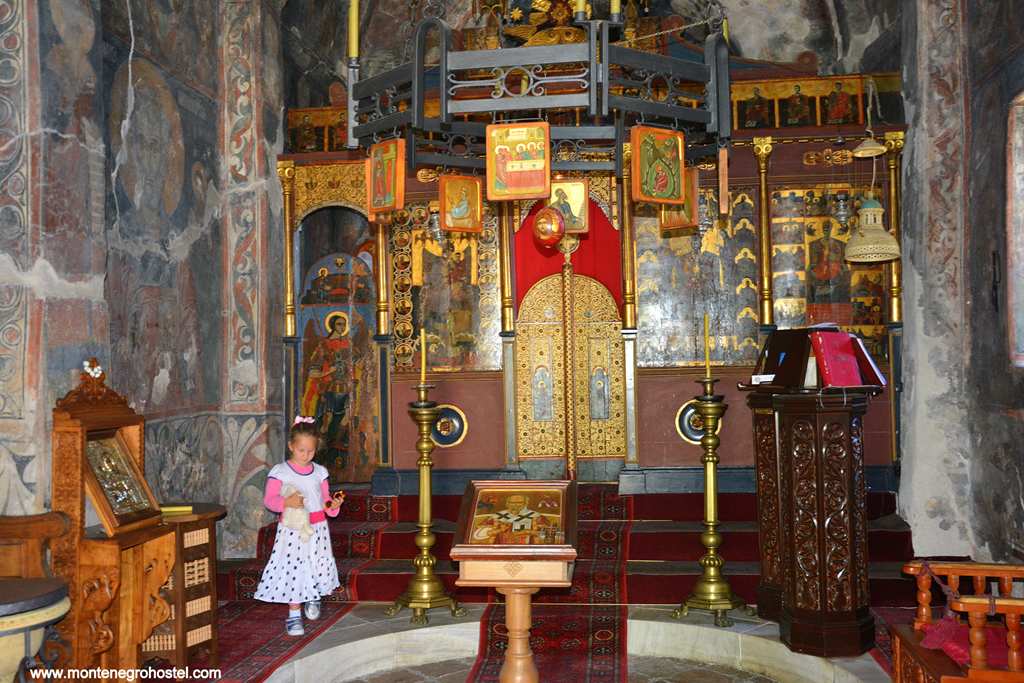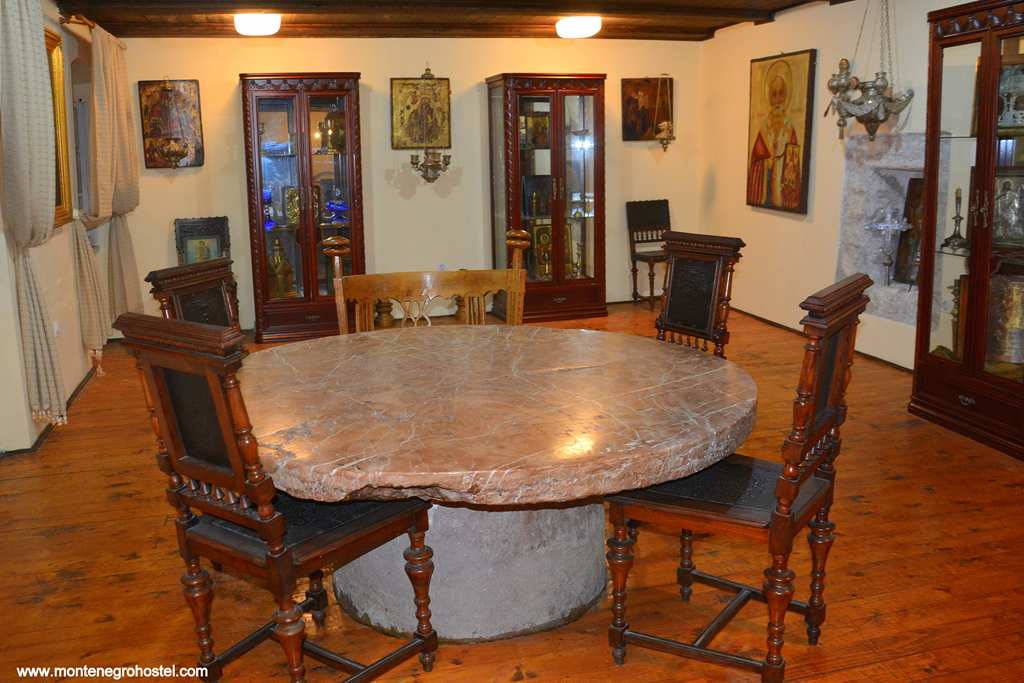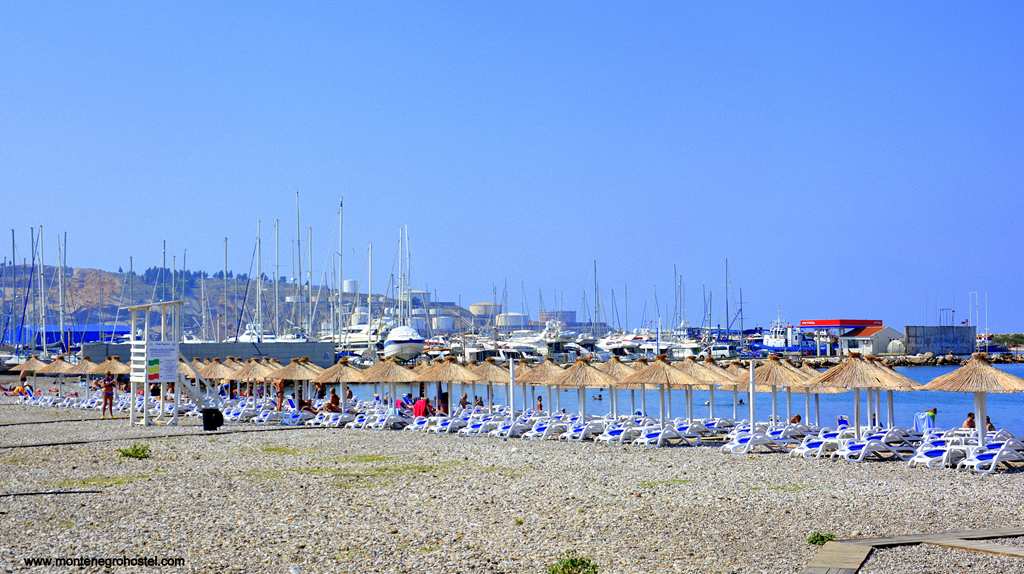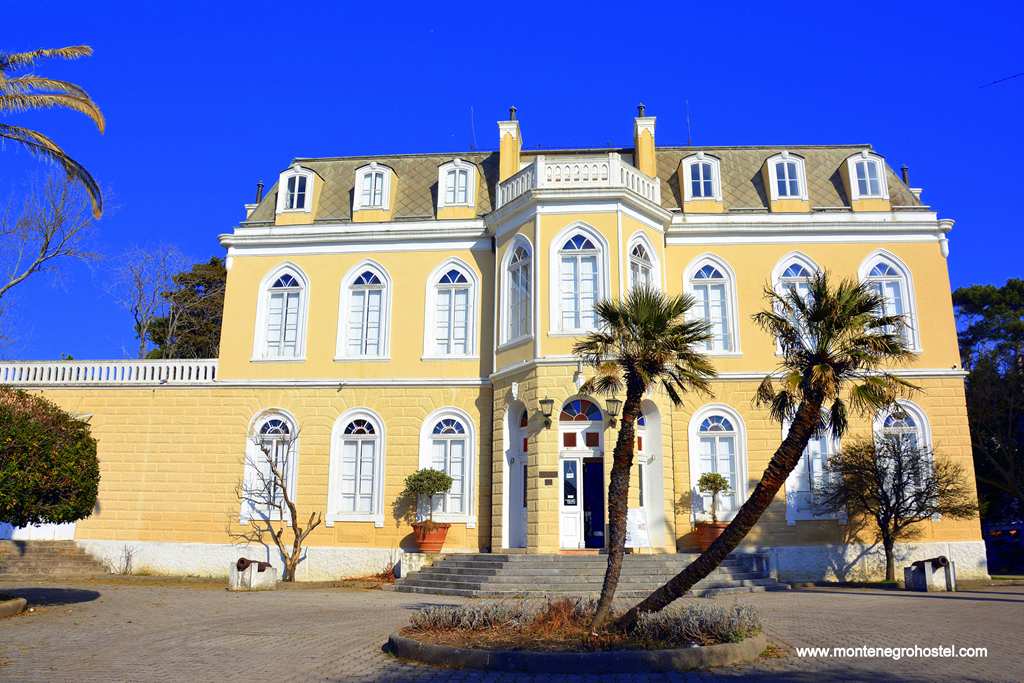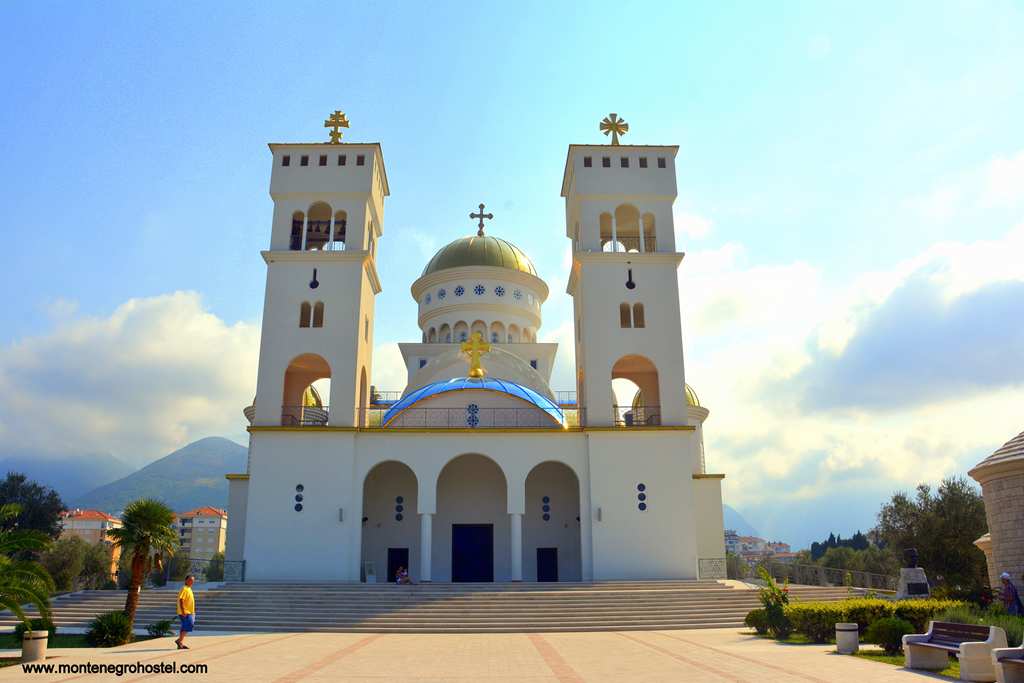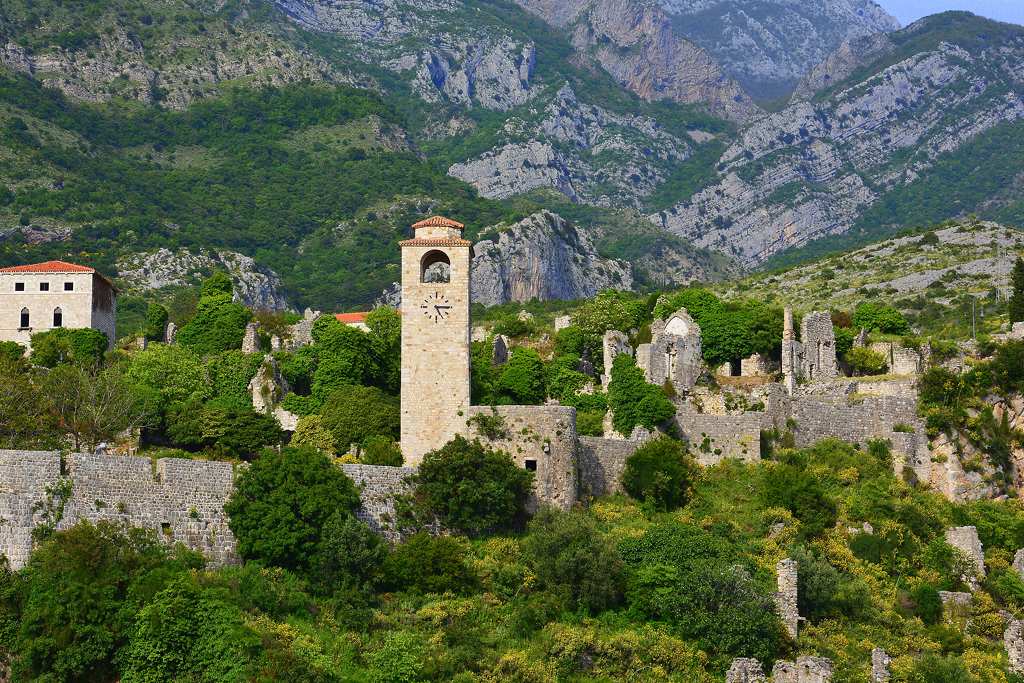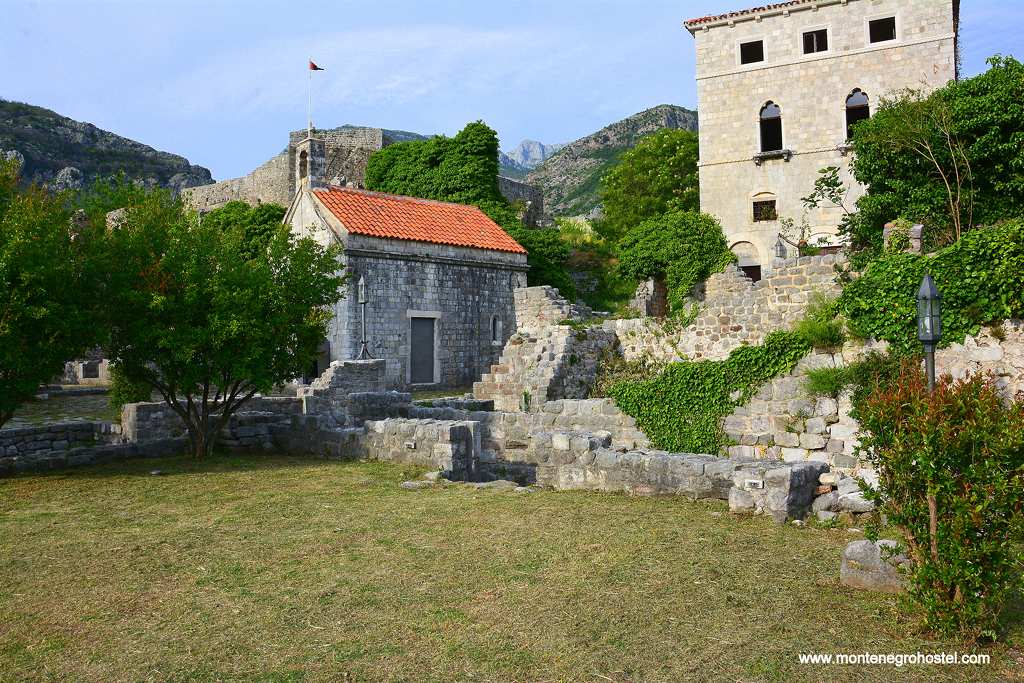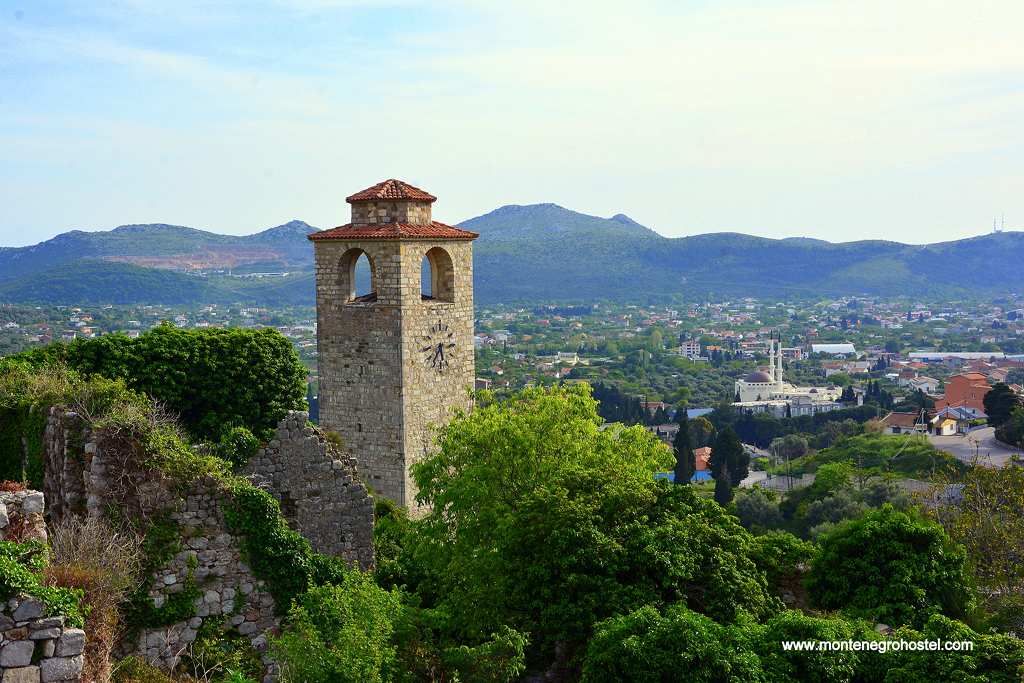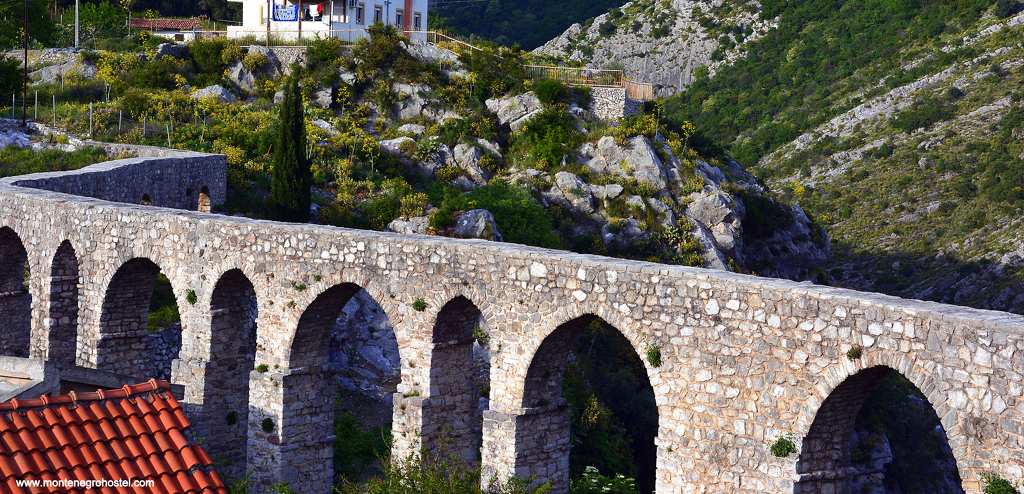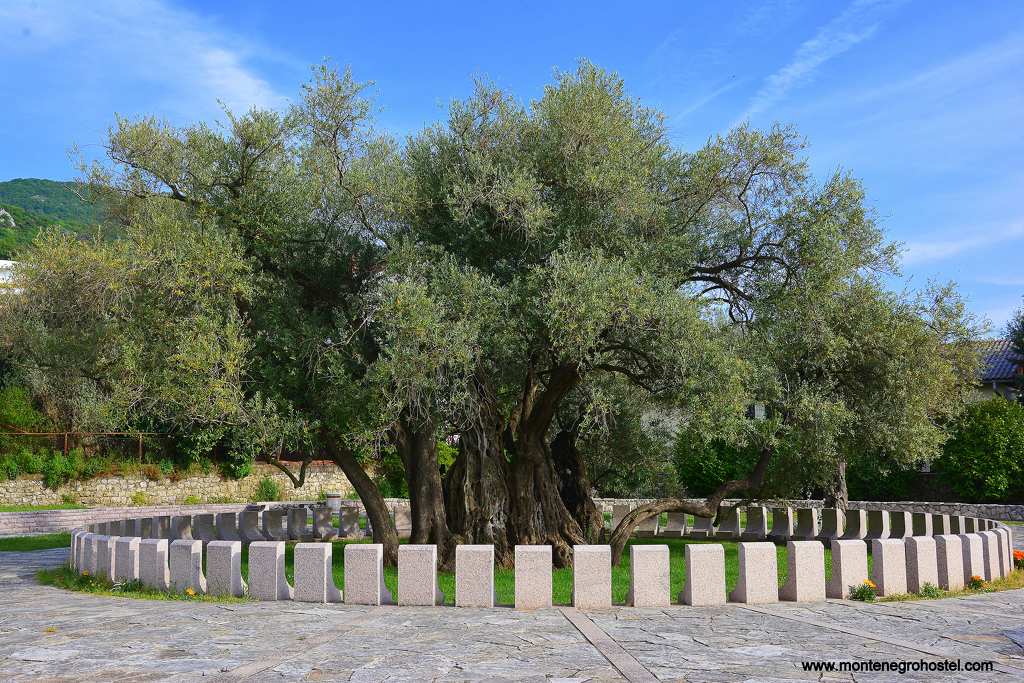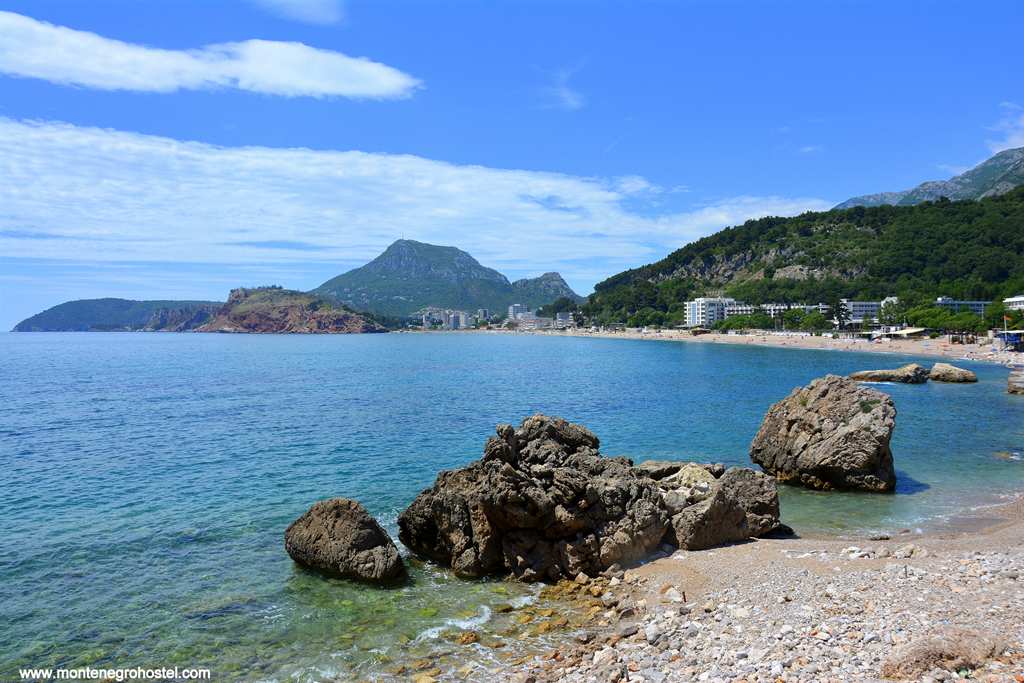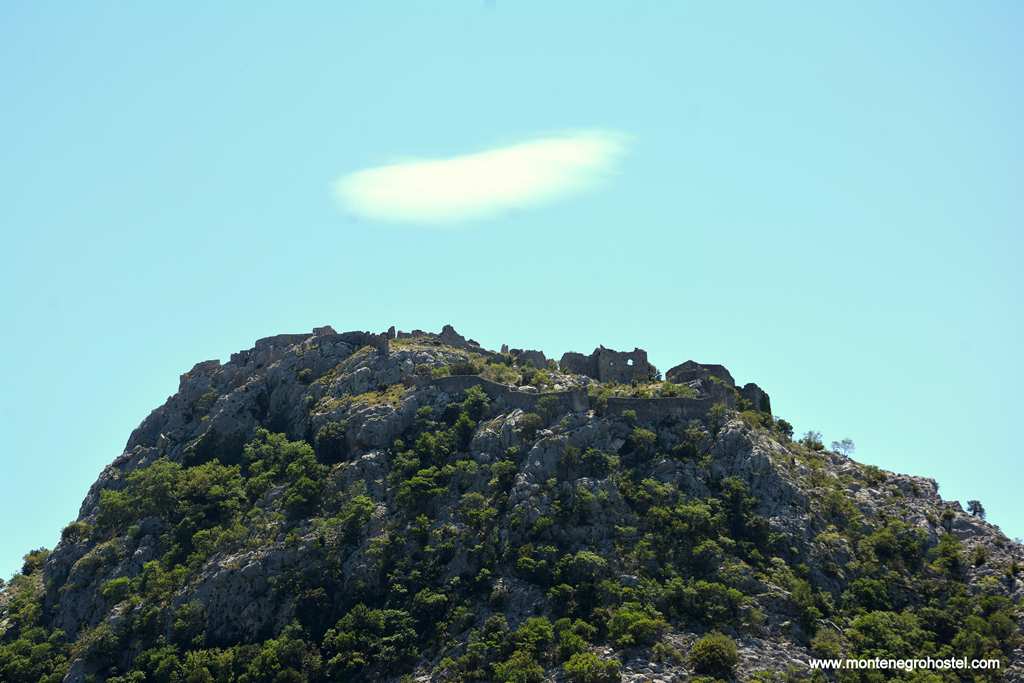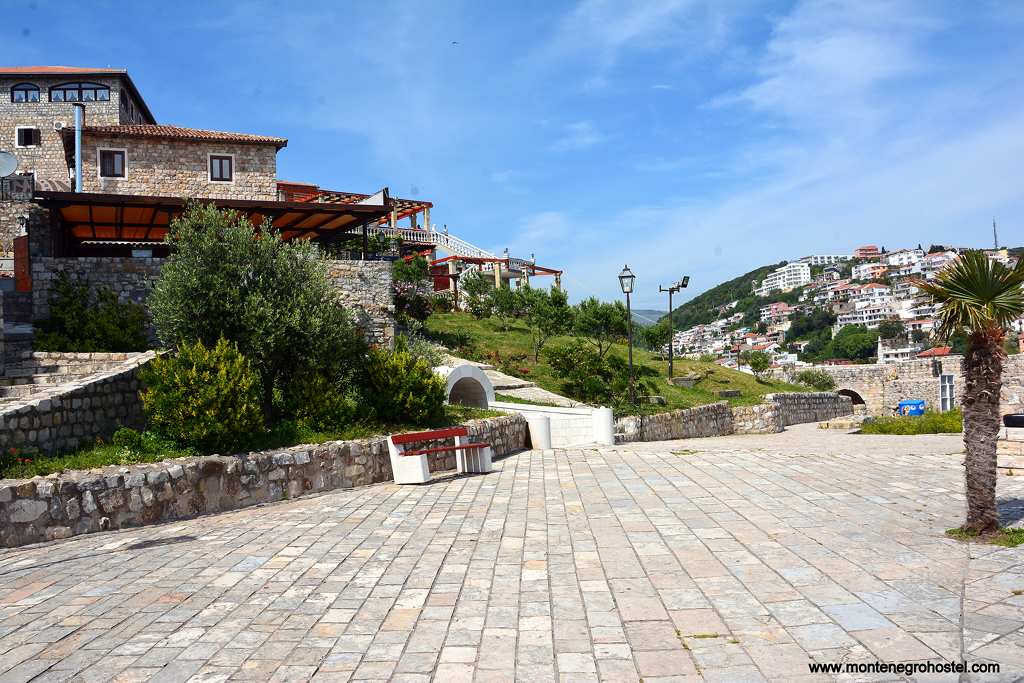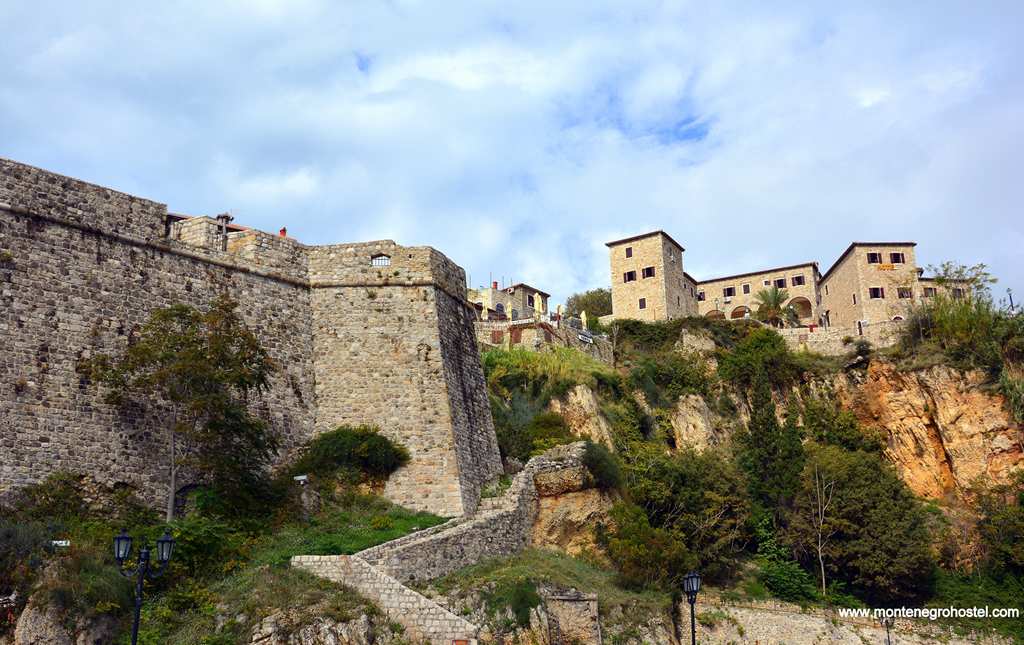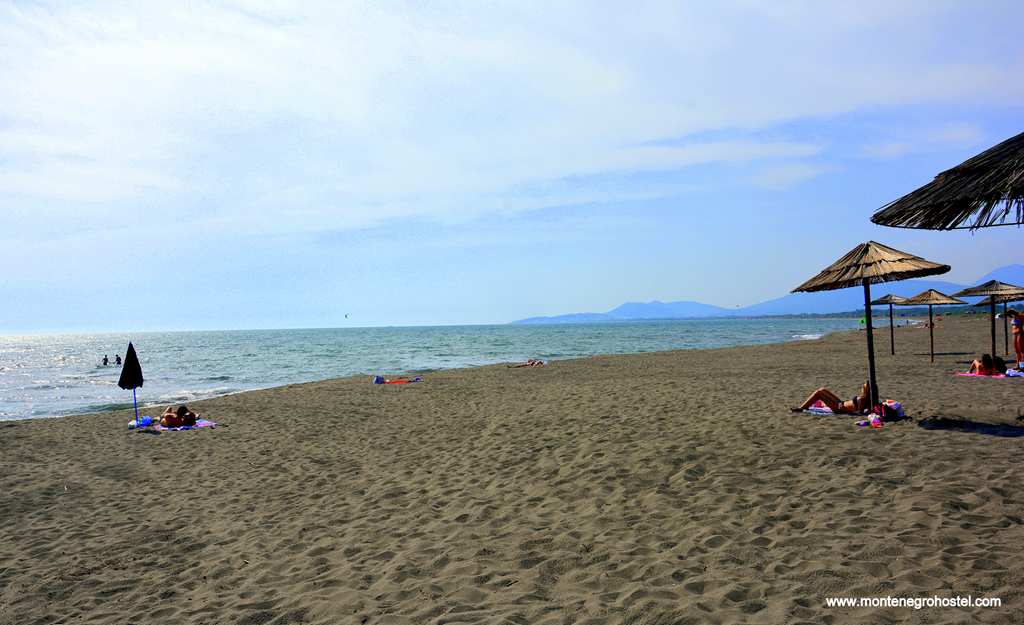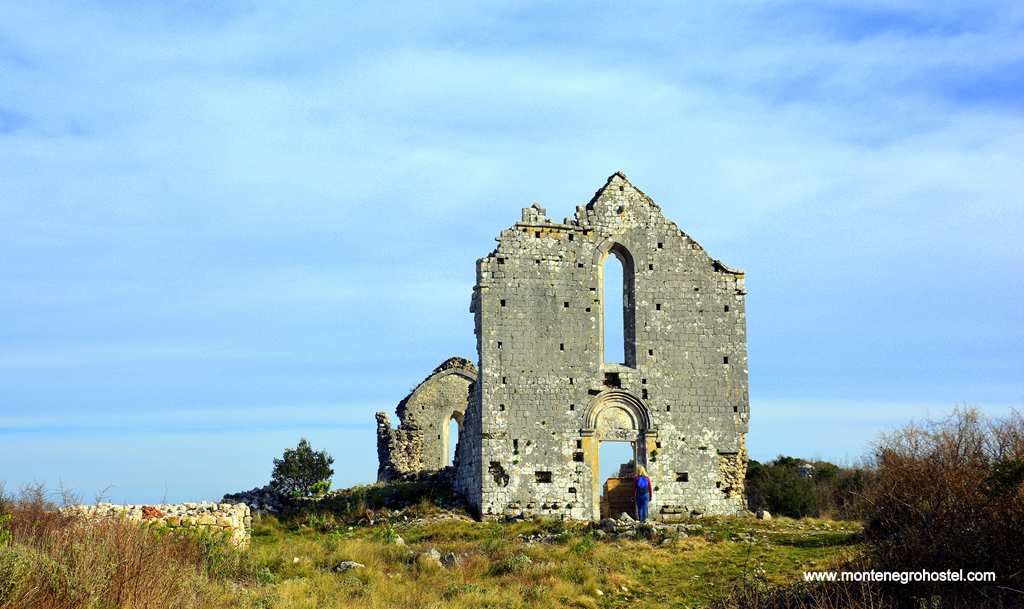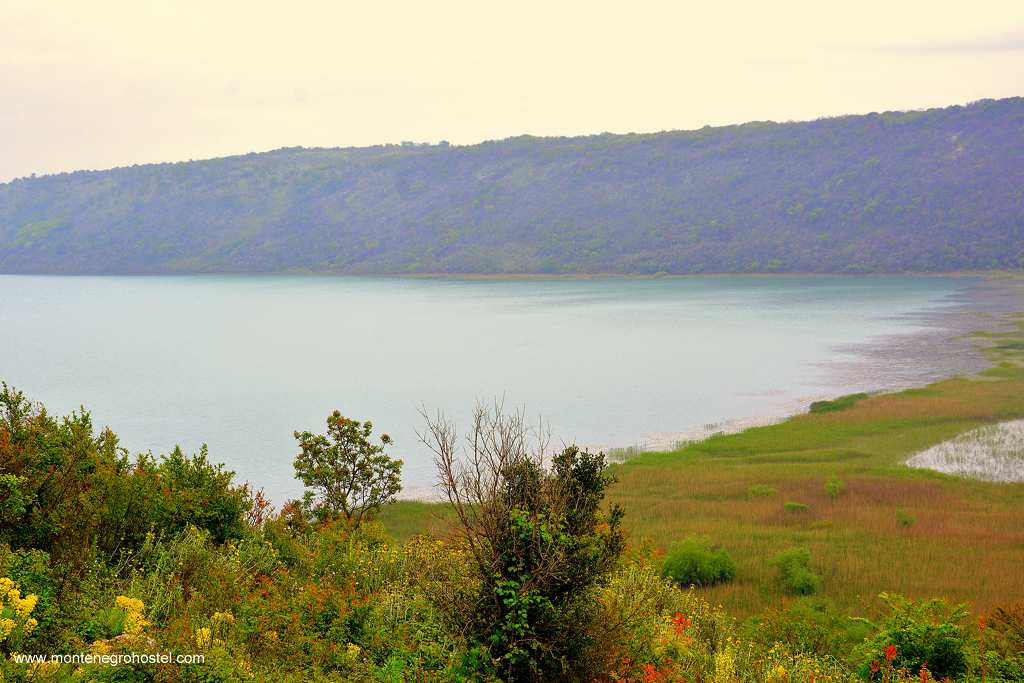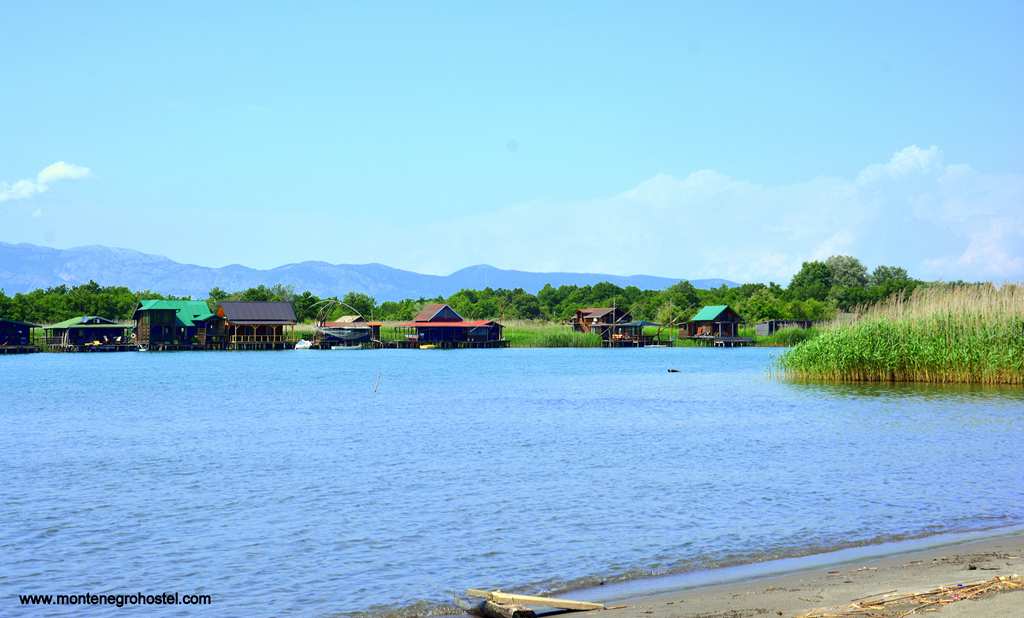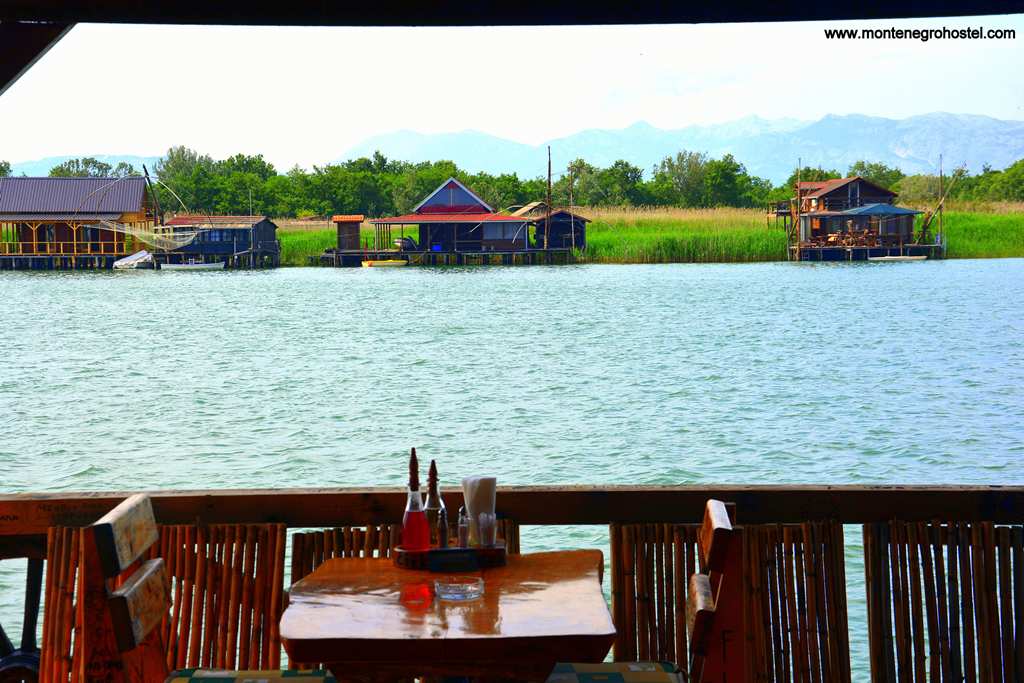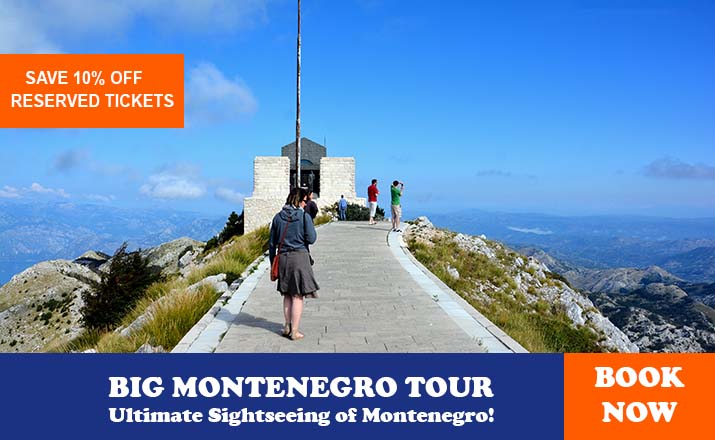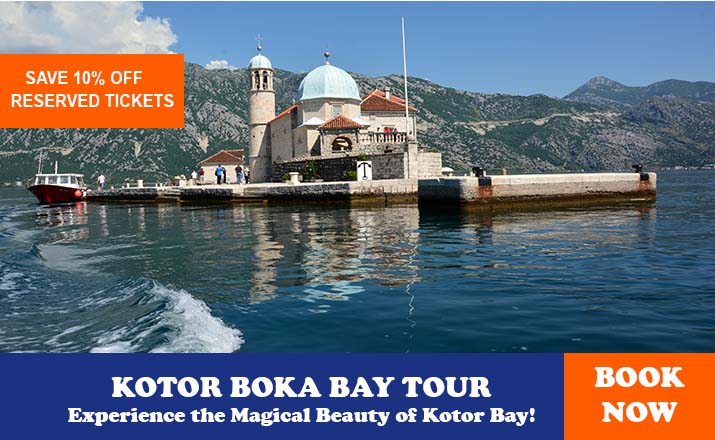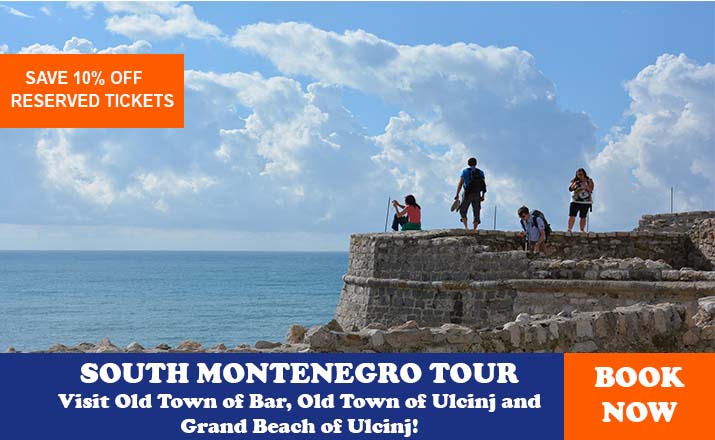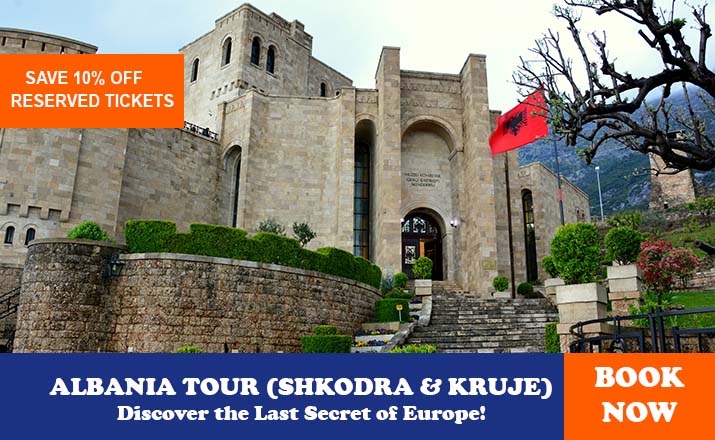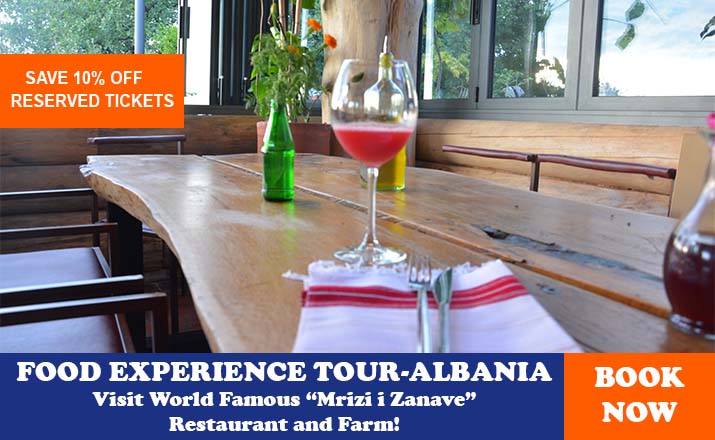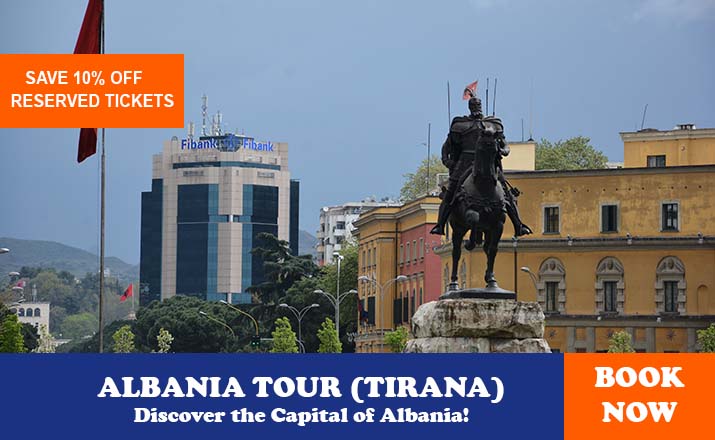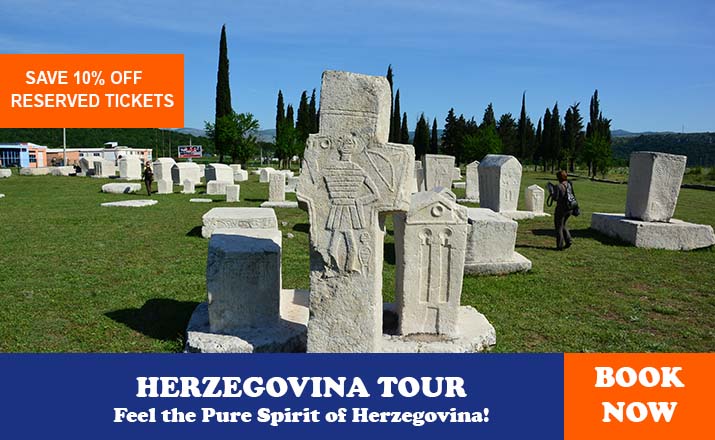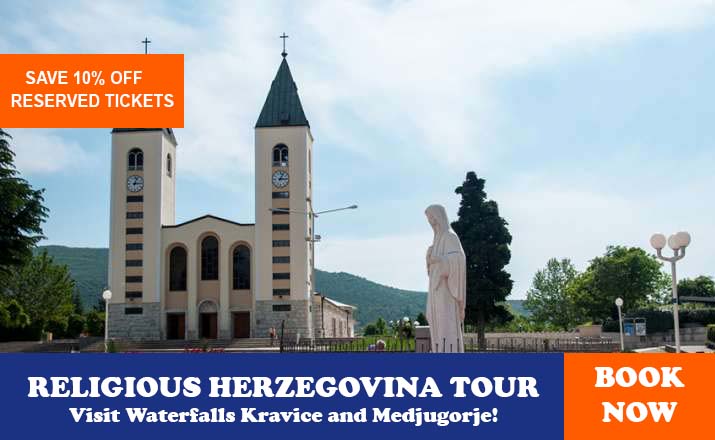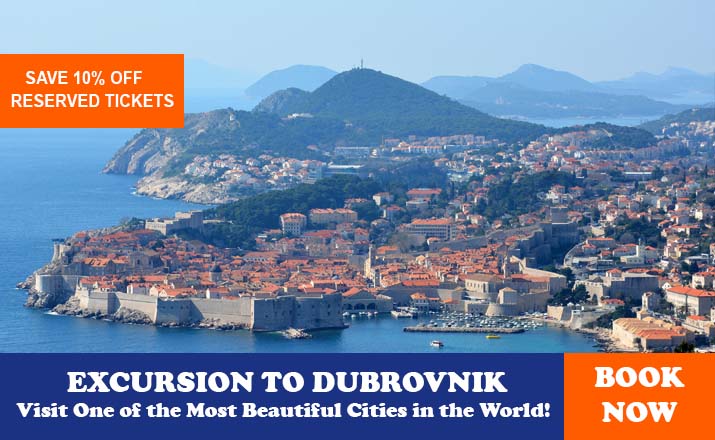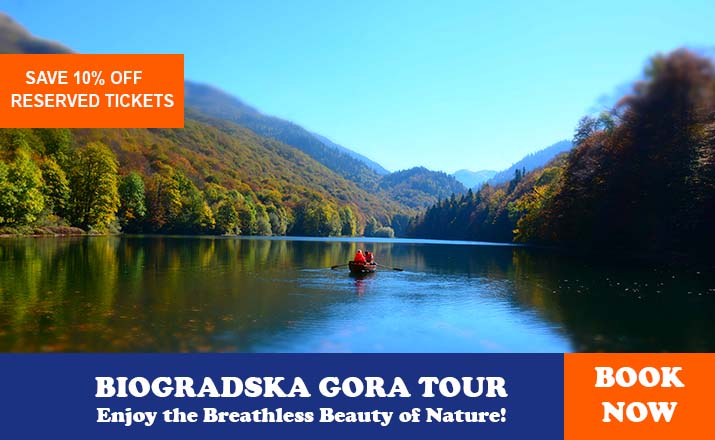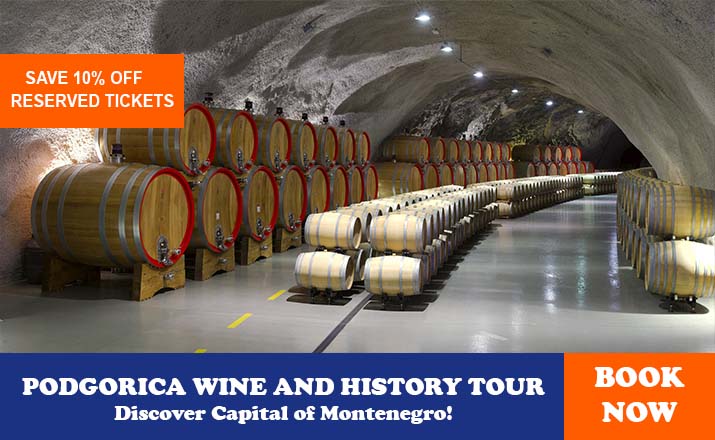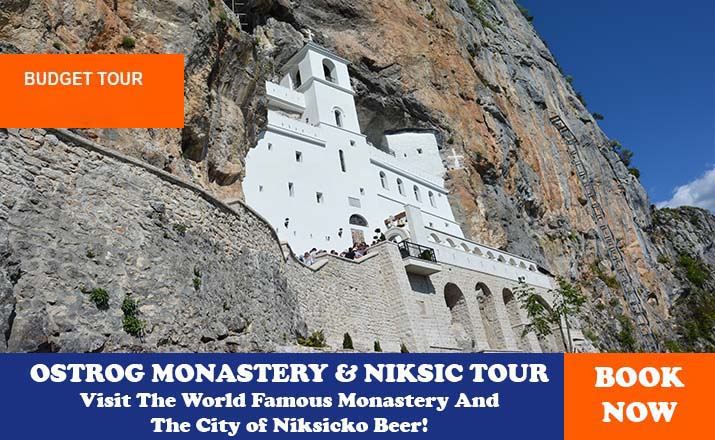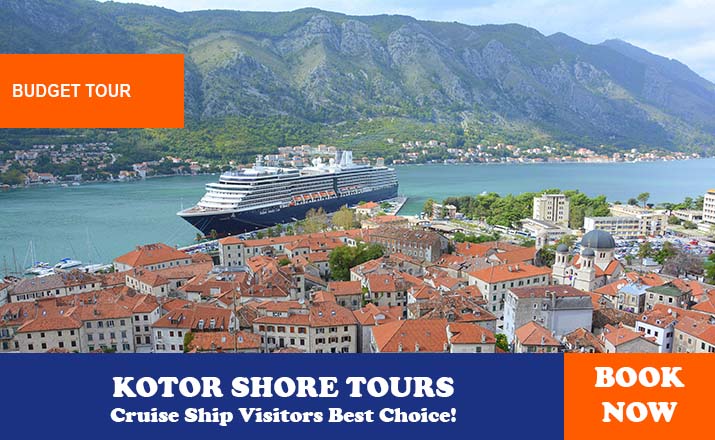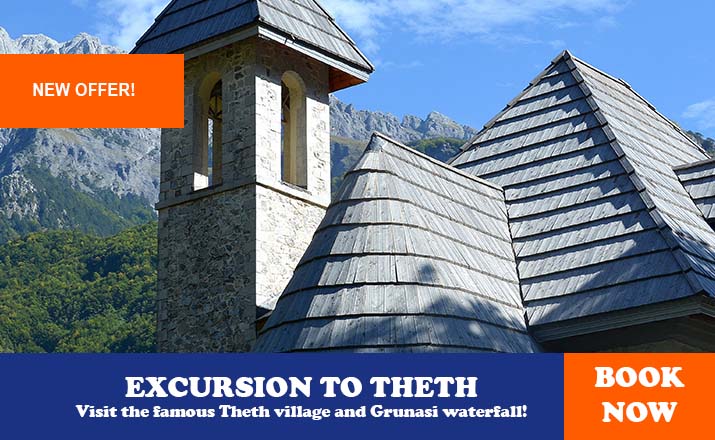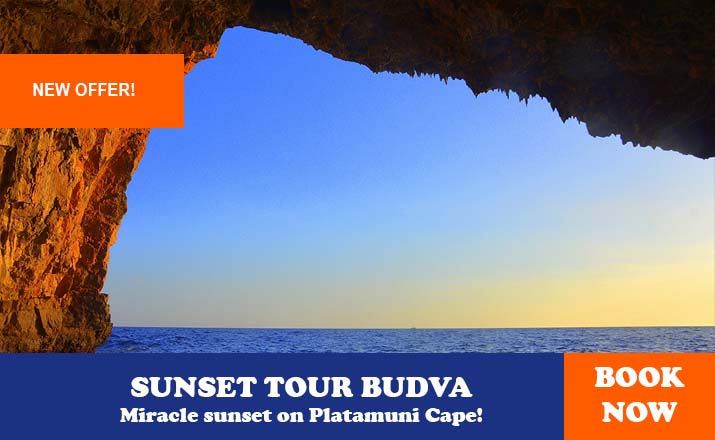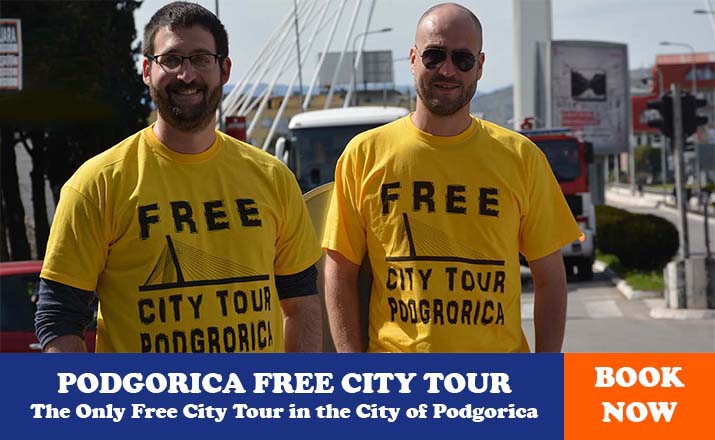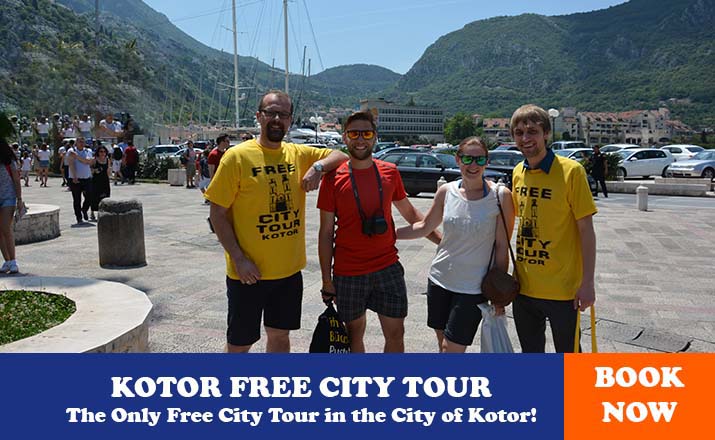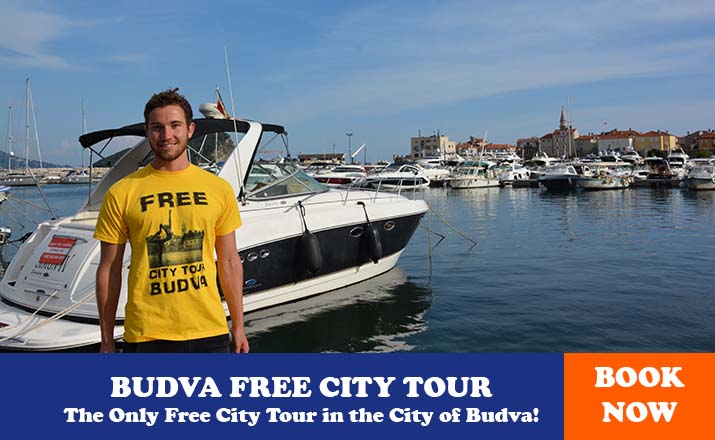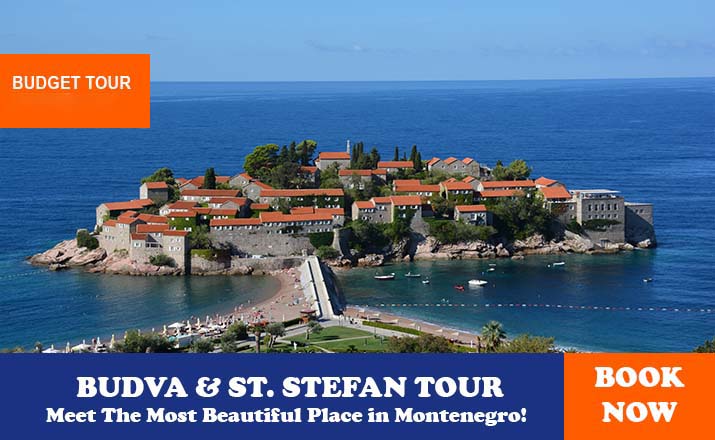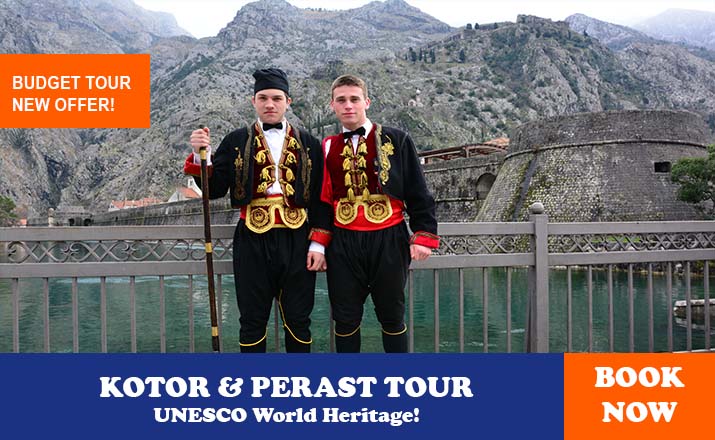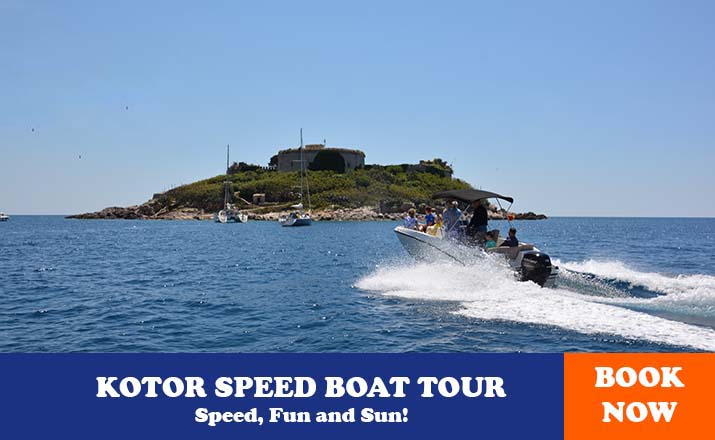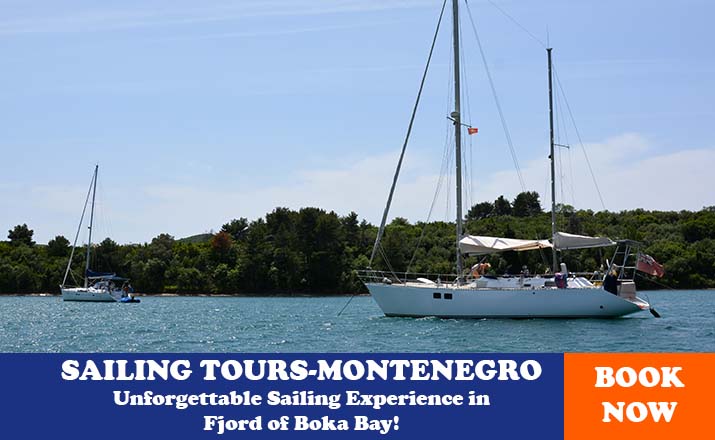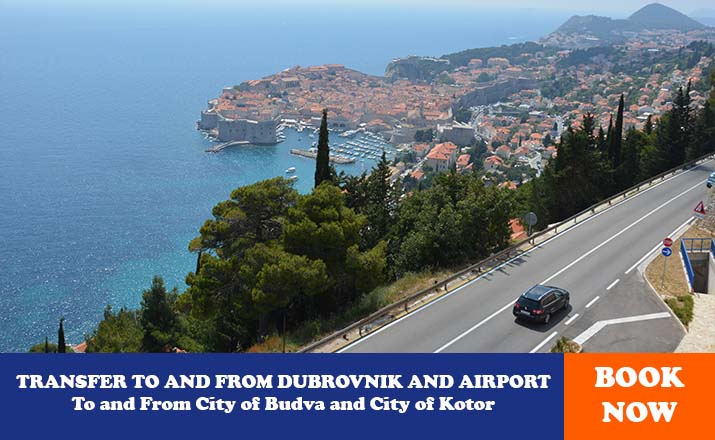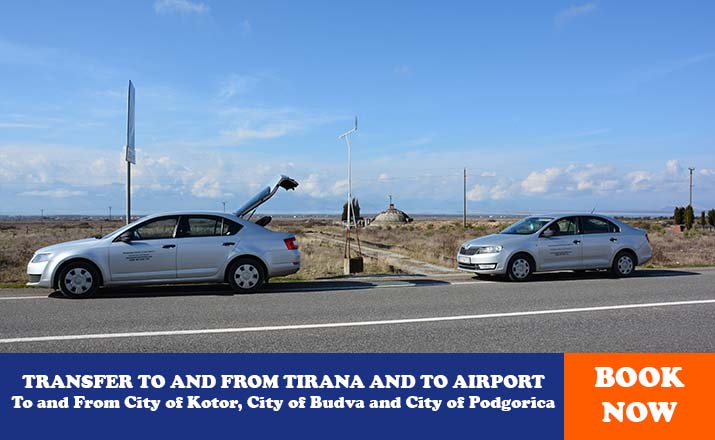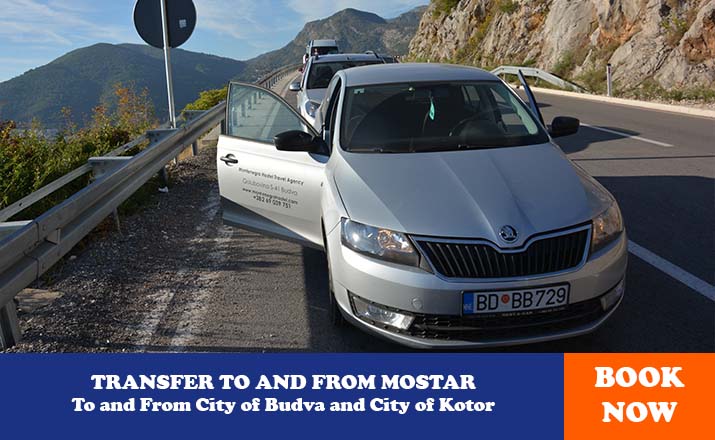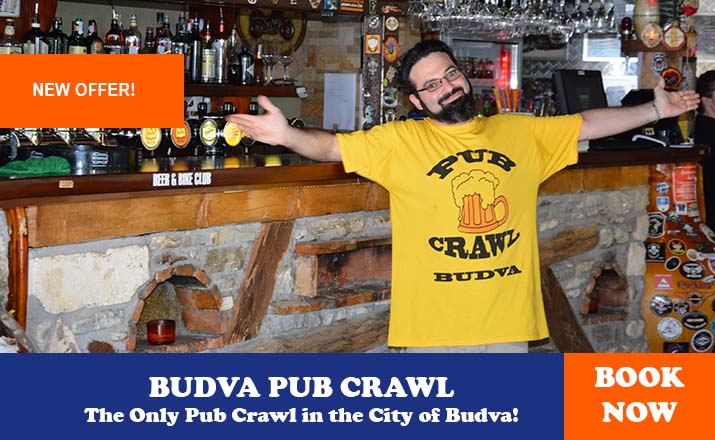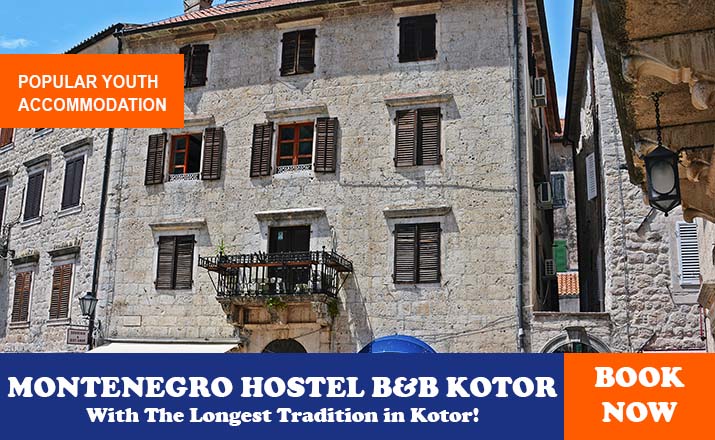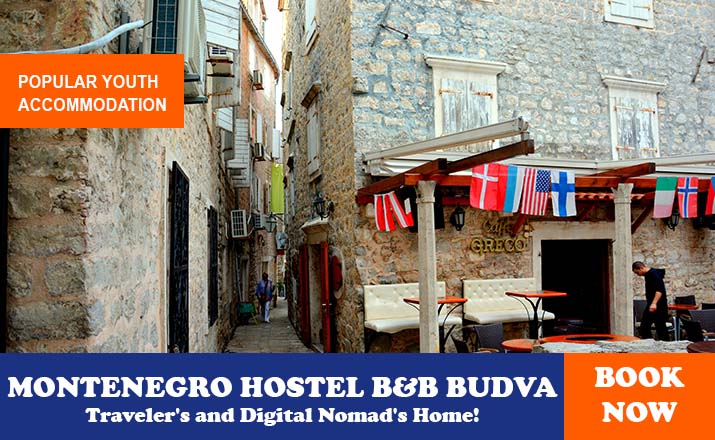ABOUT LITTORAL IN MONTENEGRO
THE LITTORAL IN MONTENEGRO
For all those who yearn for sun, sea, and beaches, this is the part of Montenegro to come to. From Platamuni Points just north of Budva to the Bojana River, which forms the border with Albania, you will find views across the open sea, mild climate, olive groves, and all other things one associates with the Mediterranean. Most of the Littoral (Primorje) is a narrow strip of land between the sea and the steeply descending mountains, with just a few small plains, the largest of which has now been taken by the cities of Budva and Bar. Other towns are passed into the sea, with new hotels, villas, and apartments, and their back and old villages draped on the mountainside above them. Once, the rural part of the Littoral was as important as the urban one, but today most of the inhabitants have moved to the urbanized coast. Furthermore, the towns of the Littoral receive a steady influx of people from all of Montenegro due to the good possibility of finding work and a favorable climate.
All of these novelties and the orientation of the regions towards tourism have drastically changed the region's appearance, and the places untouched by commercial developments are becoming rarer. The beauties of this area have drawn the attention of people throughout the ages. The oldest cities- Budva and Ulcinj- were founded already by the Ancient Greeks as trading outposts with the inland tribes. Roman presence left a mark much deeper than the few ruins and mosaics remaining to this day: after the downfall of their Empire and the barbaric invasions, the Roman population withdrew to the fortified maritime towns, keeping their Latin language and close ties to Italy. For centuries, the population was slavized, and Roman Catholicism gave way to Orthodox Christianity. The Latin and Catholic legacies have survived due to the rule of the Venetian Republic, which ruled a lion’s share of this region from the mid-15th century.
The towns of Ulcinj and Bar were taken by the Turks in 1571 and changed their character completely, which is evident to this day, but Budva and its environs are in the grasp of the Venetians. Montenegrins liberated Bar and Ulcinj in 1878, winning access to the sea for their small principality, while the rest of the Littoral was joined with Montenegro in 1918 when Yugoslavia was formed. The northernmost town in the region is Budva, the undisputed capital of Montenegrin tourism. On the elegant stone streets of its walled old town and in its fine restaurants, one will find tourists throughout the year. The Budva Riviera around the town is a series of large and small beaches served by a multitude of hotels and apartments to let. The first one is Bečići with its long beach and many top-class hotels and surrounded by 2km of sandy beaches.
Close by is Petrovac, a smaller and much calmer city than Budva, but equally nice in terms of nature and tourist attractions. Further south is Bar, the largest city of Littoral. The modern part of the city is centered around its large harbor and shipyard. However, nearby is its historical predecessor, The Old Bar (Stari Bar), with its fascinating ruins of the medieval town amidst its strong walls. The strip of coast south of Bar (Dobre Vode) is equally in beauty that of Budva but lacks the picturesque small towns, except for summer houses and auto camps. Ulcinj differs from the rest of the Littoral as the only town with an ethnic Albanian majority and a strong oriental character. This is reflected both in its mosques of trading, small coffee houses, and kebab restaurants.
At the top of the hills in Ulcinj opens a coastal plain opens with many villages still focused on agriculture. The coast forms a single 13 km long beach, deservedly called the Great Beach (Velika plaža). At its southern end lies Ada Bojana, an unusual feature. This is a river island at a confluence of the Bojana River and the Adriatic Sea.
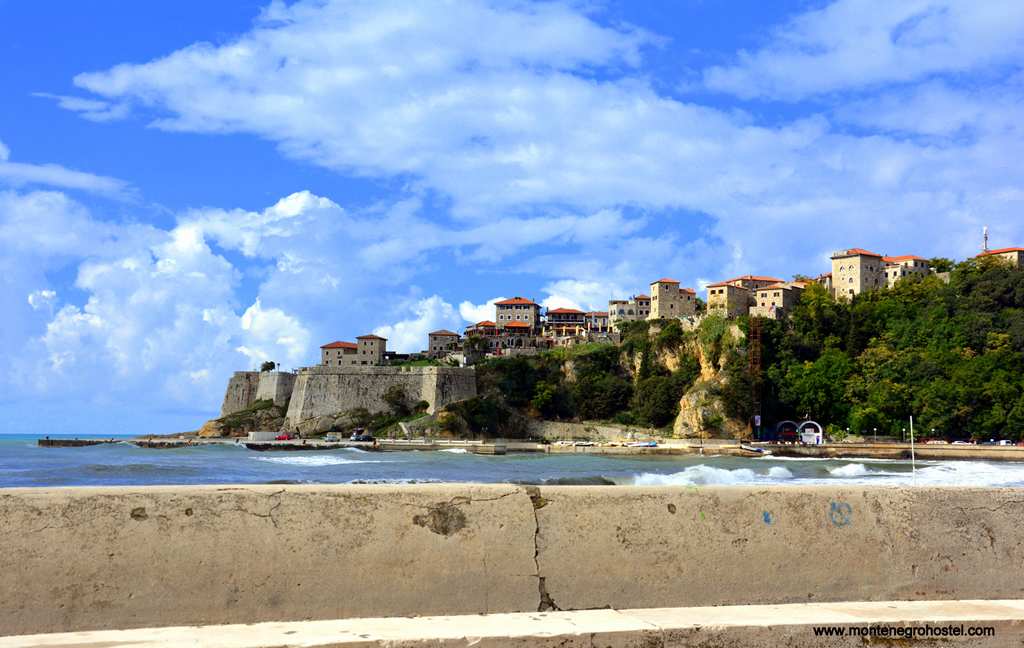
Used to be a nudist-only resort, but nowadays it is also known for the excellent fish restaurants and apartments lining the banks of the river Bojana. The Adriatic Highway (Jadranska magistrala) runs the full length of the region, following the coastline. Smaller roads branch off from it, leading on one side to numerous coves and beaches, and on the other to the monasteries and rarely visited villages imbued with the peace of olden times.
Montenegro Hostel Team
BUDVA
BUDVA
With its excellent sandy beaches, the multitude of hotels, and the scenic walled old town of Budva, including the surrounding area, it is the single most important summer resort in Montenegro. The old town lies at the cape of Budva’s spacious bay, while the rest of the flat terrain around it is quickly being filled with houses and apartments, gaining ground each year. During the beginning and at the end of the season, it is a very pleasant place to stay. Budva is one of the oldest settlements on the Adriatic. The legend holds that it was founded by the Theban king Cadmus, while the written sources tell us about the Greek colony Buthoa already in the 4th century. BC. The town existed quietly throughout the Roman era but was plundered in 841 by the Saracens. It recovered as the Romans embraced the Slavic and Avar populations who settled locally and gradually mixed with them. In the period of the Nemanjić Dynasty from Serbia, it was a sizable merchant town, but it lingered far behind the importance and wealth of Kotor. The town acquired a statute book (whose text is preserved) that regulated its autonomy and all the important communal questions as well. For the house of Balšić, it served as the main port both for trade and for sending ships to war with the other nobles. After changing masters several times, Budva decided to accede to Venice in 1443. Bit by bit, the Turks closed in on its walls, leaving Budva cut off from its surroundings and dependent on Venetian help.
After changing masters several times, Budva decided to accede to Venice in 1443. Bit by bit, the Turks closed in on its walls, leaving Budva cut off from its surroundings and dependent on Venetian help. However, Venice proved to be too far away when, in 1571, Turkish pirates from Ulcinj captured and burnt down the town. It took a long time for Budva to recover to its former condition. The town was also damaged by an earthquake that rocked the southern Adriatic in 1667. With the fall of the Venetian Republic in 1797, Budva began a turbulent period in its history. The aristocrats opted for the Habsburgs, and the citizens and the peasants for Montenegro. The Montenegrin party prevailed, and metropolitan Petar I Petrovic Njegos administered Budva for several months until the Austrian army arrived. After their defeat at Austerlitz, the Austrians ceded Budva and other towns of Boka Kotorska to join forces made up of the Montenegrins and the Russian Adriatic fleet. The French attempts to capture the town were fought off, and the joint government protracted on until the Tilsit peace was signed in 1807.
After many fights in 1813, Montenegrins won the final liberation from the French administration, but in 1814, Budva became a part of Austria. The Austrian attempts to mobilize men for its army were met with two insurrections in 1869 and 1882. In 1915, during World War I, Budva was briefly liberated by the Montenegrins, during which period many people joined the Montenegrin army. These volunteers returned victoriously in 1918, leading the Serbian army in unifying their town into the new state of Yugoslavia.
Tourism flourished already in the 1930s when the first modern hotels were built. In 1979, a strong earthquake reduced Budva to rubble. The recovery of the town lasted 6 years, but when it was finally finished in 1985 when Budva shone like never before. The hub of Budva is its Old Town, which became too small for its population only in the second half of the 20th century. The reconstruction following the 1979 earthquake purged it of several newer buildings and brought back fully its medieval character with narrow zigzag streets and tiny squares, with many small boutiques, jewelers, and souvenir shops, but it is also home to many restaurants and cafes.
OLD TOWN BUDVA
The Old Town of Budva is enclosed by sturdy town walls that stand in the place of the medieval ones but date mostly from the renewal following the 1667 earthquake. The entrance to it is gained through six gates: the main Land Gate from the spacious square facing north, the small Sea Gate towards the small beach, and four others from the direction of the yachting marina. It is possible to climb up the walls in three places and walk along the ramparts from the Land Gate to the Citadel. Above Land Gate stands the winged lion of St Mark, the symbol of the Venetian Republic, where Njegoševa St., the main street of the Old Town, leads to the Trg Pjesnika (Poets‘ Square), and to the Sea Gate.
THE SQUARE BETWEEN THE CHURCHES
Two small snaking streets connect the end of Njegoševa St. with a square, The Churches, where the four churches of Budva are. Leaning on the walls to your right is the Santa Maria in Punta (Saint Mary in the Cape), named after its prominent location. It was built in the year 840 for a Benedictine monastery but was later taken over by the Franciscans, who used it until the abolishment of their order by the French in 1807, when it was converted into an armory. Next to it is an even smaller (only 5 by 3 m) church of St Sabbas of Jerusalem (Sveti Sava from Jerusalem is not St Sava from the Serbian Nemanjic Dynasty, but the pronunciation is the same). It was built in 1141 and used by the Orthodox up to the 16th century, when forced to share it with the Franciscans. In the middle of the square stands the beautiful Church of Holy Trinity (Crkva Svetog Trojstva), built with interchanging rows of red and white rock modeled after the Budva's Orthodox church in Podmaine monastery. The Holy Trinity church was erected in 1804, during which time the Orthodox population became a majority and used of fall of Venice to gain religious equality with Catholicism.
Inside the church is a splendidly gilded iconostasis from 1864, painted by Nicholas Asppitios from the Greek island of Corfu. In front of the church is the modest grave of Stjepan Mitrov Ljubiša. The fourth church with the tall belfry is St. John’s (Crkva Svetog Ivana). Until 1828, the seat of the Catholic bishopric while today it is only a parish church. Founded in the 7th century. It bore witness to many changes, destructions, and reconstructions until it got its present-day look in the 17th century. The belfry, one of Budva’s landmarks, was added in 1867, while the adjoining bishop’s residence was remodeled in a neo-Gothic style in 1903. Inside this three-nave basilica, several icons of Byzantine style are displayed, the most important of which stands in the marble altar and is called Santa Maria in Punta (brought from the church of that name after its closing), revered as the patroness of the town. Next to this church in Budva, a large basilica from the early Middle Ages was built, probably in the 5th century.
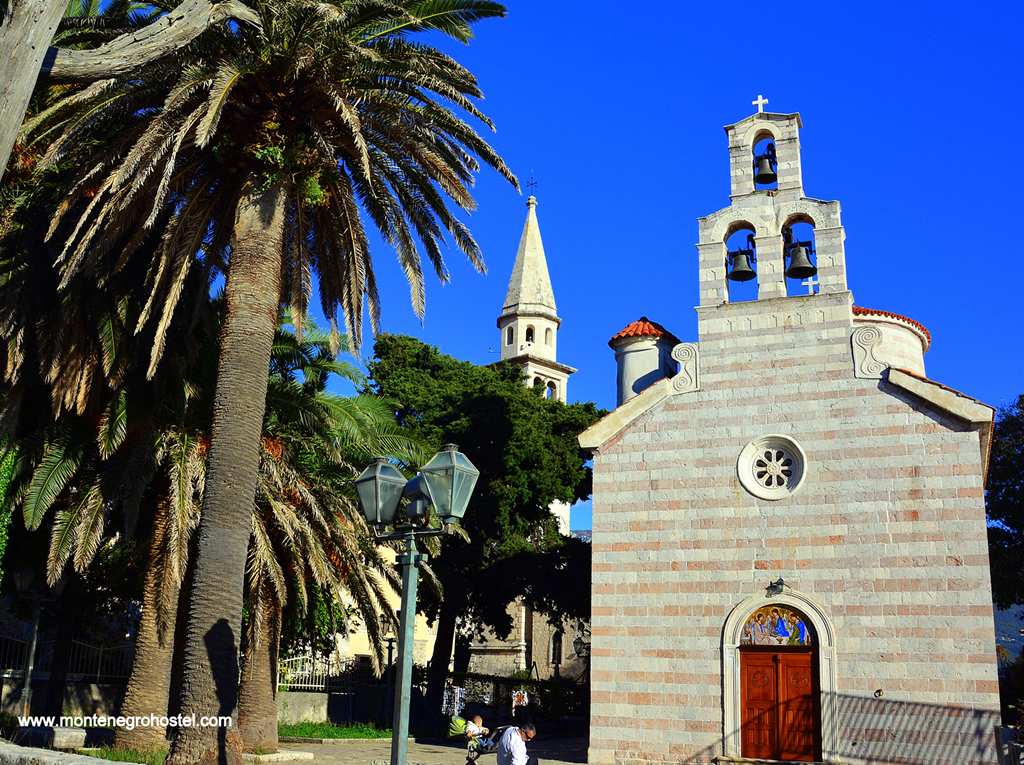
THE CITADEL
At the highest point in the old town of Budva rises the Citadel, sheltered on all sides by high walls. It stands in the place of the Hellenic Acropolis. Its present-day look dates from the time of the Austrian adaptation in 1836. One enters the Citadel through its barracks. The ruins of the Church Santa Maria di Castello can also be found here, of which only one wall with medieval frescoes remains.
MUNICIPAL MUSEUM
The museum is situated in a stately stone edifice in the southeastern corner of the old town. The ground floor is dedicated to temporary exhibitions, the first and the second floor present the archaeological findings from the era of the town’s founding, the Roman and medieval period, while the exhibits on the last floor depict the life of town families and of peasants from the surrounding area. The most important of the exhibits are surely those from the Greek and Roman eras, such as their jewelry, poetry, extraordinarily well-preserved glass flasks of all types, and a coin collection.
STEFAN MITROV LJUBIŠA MEMORIAL HOME
Stefan Mitrov Ljubiša (1824-1878) was a writer who rose to the position of the head of the Dalmatian parliament and became one of the most influential figures amongst both the Orthodox and Catholics in Boka Kotorska and the rest of the littoral. He is known as a writer of stories dealing with subjects of local history and colored strongly by local folklore and language. The exhibition in the house where he was born presents copies of archival documents on his life, original editions of his works, as well as news articles and testimonies from the later era about his life and work. Next door to the Memorial Home ( up the steps) is the Gallery of Modern Art (Moderna galerija), which houses temporary exhibitions of contemporary Montenegrin artists. At the city park, next to the old town, stands the bust of Stefan Mitrov Ljubiša, a work of Slovenian sculptor Lojze Dolinar from 1935.
ANCIENT NECROPOLIS
During the digging of the foundations of “Avala”, Budva’s first hotel, in 1938, the workers came across a foundation of a Roman necropolis. Later excavations showed that it lay above the Illyrian-Greek one, while the oldest layer is a burial from the Neolithic. The best-preserved tombstones are found here and a large Roman mosaic can be seen in the green area between hotels “Avala” and “Mogren” facing the Land Gate.
PODMAINE MONASTERY
Until a decade ago, this monastery stood solemnly on the slopes of the first hill to the west of Budva, but due to the rapid expansion of the town, today it is well within its limits. The monastery (alternatively also called Podostrog) origin name got its name from the surrounding area, which belonged to the Maine clan. It was the part of Montenegrin territory closest to Budva until 1837, when Njegoš, following many years of pressure, sold it to the Austrians and thus regulated the border with the Habsburg Empire, which was then established on top of the first mountains. It isn't known when this monastery but we know that it was renewed in 1630. Enjoying a mild, Mediterranean climate, it was popular with the Metropolitans of Cetinje, especially during winter. Bishop Danilo (Vladika Danilo) spent his last days. His body lay here until 1856, when it was carried to Cetinje and buried on Orlov krš. It was also one of the residences dearest to Peter II Petrovic Njegoš, who wrote here several of his books.
Monastery Podmaine has two churches. The large one standing in the middle of its stone-paved courtyard was built in the mid-18th century by Metropolitans Sava and Vasilije. It is built in rows of white and reddish stone and has a large cupola with small windows. Its west face has a richly decorated portal, while above it stands a nice rose window. The interior is decorated with new fresco paintings. The older church is a small underground chapel beneath the monks’ dwellings and was constructed at the time of the monastery’s renewal in 1630. Inside it one can see quite damaged frescos from the period of its construction. On the other side of the dwellings is a large terrace with a view of the fields of Budva, built on the same level as the monastery’s walls. On the west side, there is a small tower and a stone well decorated with reliefs of a two-headed eagle, a lion, and a cherub’s head.
SVETI NIKOLA ISLE
The isle, called after the church of St Nicholas, which stands on its west promontory, is a wedge-like piece of rock closing the bay of Budva. The side-facing land has several small coves, but the ground then steeply rises to the highest peak of 120m above sea level, from where one can enjoy a panoramic view of the whole of the Budva Riviera. Practically covered in lush greenery, known for many rare plant species, among them is a unique kind of wild lily called Lilium Buthuense. It is inhabited by doves and deer. The small St Nicholas Church is first recorded on a drawing of Budva from the 16th century. Until 1836, the gravestones could still be seen around it. The vicinity is much merrier: the lone dock and restaurant “Hawaii,” whose name is now synonymous with the whole island. The elongated beach in front of the church is attended by boats coming from Slovenska plaža and other parts of Budva.
The small St Nicholas Church is first recorded on a drawing of Budva from the 16th century. Until 1836, the gravestones can still be seen around it. The vicinity is much merrier: the lone dock and restaurant “Hawaii,” whose name is now synonymous with the whole island. The elongated beach in front of the church is attended by boats coming from Slovenska plaža and other parts of Budva.
BEČIĆI
South of Budva and almost joined with it is the resort of Bečići, known for its sea of long sandy beaches that have been voted as one of the finest in the Mediterranean as far back as 1937. On the side closer to Budva is a group of hotels, led in grandeur by the 5-star hotel “Splendid”. On the other side of the beach is the tourist village of Rafailovići with old stone houses adjoined by hotels and several well-known restaurants.
KOSMAČ FORTRESS
After the final demarcation with Montenegro in 1841, Austria decided to secure its maritime possessions with a series of fortifications. One of the most impressive among these is Kosmač, located in the village of Brajići (11 km from Budva), on the highway towards Cetinje. The derelict fort was built with large stone blocks with loopholes for cannons. Kosmač was attacked in the 1869 insurrection by the Brajići clan but was never taken. The importance given to it can be seen from the fact that it was visited in 1875 by Emperor Franz Joseph.
CADMUS AND THE ILLYRIANS
Cadmus was the son of the Phoenician king Agenor. When Zeus kidnapped his daughter Europa, Agenor sent his son to find her. During his search, Cadmus came to the Delphi oracle, where he was advised to give up and instead establish a town. Cadmus did so and founded Thebes. After he killed the serpent guarding the nearby springs, he sawed off its teeth, from which sprang armed men who started killing each other until only five remained, from which descend the noble families of Thebes. However, the dragon was sacred to Ares; after finishing this, he was given Harmonia (daughter of Ares and Aphrodite) as a wife. Hephaestus was enraged since Harmonia, the daughter of his wife and lover, received so much attention from the other gods.
He, therefore, presented her with a necklace that brought many misfortunes to Cadmus and his family in future years. In the end, Cadmus decided to leave Thebes for Illyria, a barbaric land to the north of Greece. Seated on an oxcart, Cadmus and Harmonia reached the tribe of Enheleans, who, as advised by Dionysus, chose them for their rulers. Under their leadership, the Enheleans overcame other Illyrian tribes, and Cadmus became their king and also founded several towns, amongst them Buthoa, modern-day Budva (supposedly named after the oxen "bous" in old Greek that brought them there). Reflecting on his life, Cadmus one day lamented that if the gods were so vengeful of him for killing a serpent, he would like to become one himself. This wish was granted to him, and he was turned into a black snake with blue spots. Harmonia decided to follow her husband, and in their honor, the Illyrians built a temple where snakes were worshiped.
Montenegro Hostel Team
SVETI STEFAN
SVETI STEFAN
The panoramic view of Sveti Stefan (St Stefan) is surely one of the most memorable sights along Montenegro’s coast, photographed so many times that it is almost impossible to imagine a promotional brochure or video without its enchanting look. This miniature island is dotted with stone houses and joined with the mainland by a narrow sand isthmus that the sea currents have built over the ages. It is an exclusive tourist resort visited by the rich and famous, with each house serving as a separate luxurious apartment. The history of Sveti Stefan goes back to the 15th century, when the Paštrovići clan helped the besieged Kotor by attacking the Turks. Returning from this victory, Paštrovići learned that the Turkish fleet was harbored near Budva. The surprise attack was a success, and great booty was obtained from the sunken ships. Expecting the Turkish reprisal, they decided to use the loot to build a fort on this craggy island. On the island, each of the twelve families had a house, while jointly they built a church dedicated to St Stefan, which gave the name of their settlement.
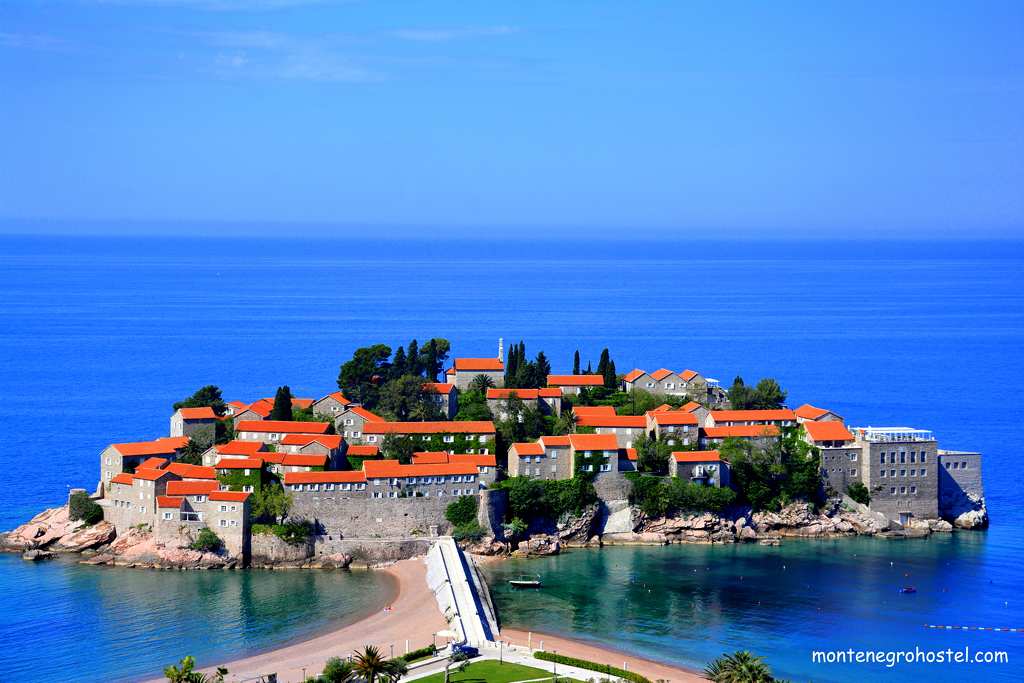
The Turkish attacks indeed came later and were repeated many times, but the island fort withstood them all, serving as a refuge for all the clan members during the worst of times. Gradually, more houses were built in this stronghold by Paštrovići merchants and by those who turned to attack the Turkish ships, and the small town soon became an unofficial capital of the clan. At the beginning of the 19th century, the “smallest town in the Adriatic grew to 400 inhabitants, but shortly afterward it started to decay due to the demise of the trade with sailing ships. In 1954, the number of inhabitants fell to just 21. It was decided to resettle them and turn the island into a luxury hotel.
The coast facing the island boasts a fine sandy beach, several small hotels, and all the tourist practicalities one might need. The only approach to the former island is by an isthmus, built in 1907 in place of the seasonal sand bar. Just by the gate is a small church dedicated to the Transfiguration from 1693, with the remains of the frescoes from that period. The narrow crooked lanes lead to the highest spot on the island, which is crowned by two churches, both dedicated to St Steven. That smaller church was founded with the town in the 15th century, while the largest dates from 1885. The larger later served as a court church to King Aleksandar of Yugoslavia and was re-dedicated to St Alexander Nevsky, a Russian saint known for his victory against the Teutonic knights. In the church, there is an iconostasis by Marko Gregović.
The first cove to the north of Sveti Stefan is the famous Miločer beach. This quaint inlet has the one-time residence of King Aleksandar, a nice 1934 villa in the style of local stone houses. Its sides are sheltered by thick groves, while the wooded park behind the villa was populated with tropical plants during the time it was the king’s reserve. One rocky hill further beyond Miločer is the small Kraljičina plaža (Queens Beach) named after Aleksandar’s wife Marija, who regularly enjoyed its 120m of sand surrounded by cypress trees and olives.
PRASKVICA MONASTERY
This monastery is set in a peaceful landscape above the main highway, not far from Sveti Stefan. The picturesque cypress-lined approach to the monastery complex is an experience in itself. Praskvica got its name after a well whose water supposedly had an aroma somewhat like peaches (praskve). The monastery consists of two churches, the monks’ dwelling, and an old school. The large church is dedicated to St Nicholas, the protector of travelers and sailors. It dates from 1847 and stands on the foundations of the one built by Balša III Balšić in 1413. This old church was destroyed in a French attack on Paštrovići in 1812 when the clan rebelled against the banishing of their privileges. Inside, there is an excellent 1863 high iconostasis by Nicholaos Aspiotis from Corfu. To the left of the iconostasis is the only remaining part of the old church painted with frescoes dating from the 15th century.
The small church of the Holy Trinity lies uphill from the large one in the cemetery. The local tradition holds that it was founded in 1050, but the first written evidence of its monastery’s existence comes from 1307. The small church was even tinier before it got the narthex with the belfry. The interior was painted in 1680 by painter Radul, who was assisted by Dimitrije, the founder of the Dimitrijević-Rafailović school of painting, which left a permanent mark on icon-painting in the Montenegrin coastline.
The ceiling portrays holidays of the Orthodox Church while the walls stand out with the frescoes of the Holy Warriors, Christ between kings David and Solomon, and of St Sava with his father Simeon Nemanja. Adjoining the church is the building that once graves home to the first school in the region of the Paštrovići clan.
Montenegro Hostel Team
PETROVAC
PETROVAC
Petrovac is one of the loveliest places on the Montenegrin coast. It enjoys all the amenities of a holiday resort with plenty of places for wining and dining, but on the other hand, it remains of fairly moderate size. In Roman times, local landowners built several villas here whose geometrically shaped mosaics can still be seen in two places in the town. In medieval times, the settlement withdrew up the slopes and existed under the name Lastva. With the agreement of Paštrović bankada in the 16th century, Venetians built on the seafront a quarantine for the sick and a small fort (Castello), which protected the sailing ships along their strip of coast. Gradually, next to the fort appeared the storehouses for wine and olive oil brought from the surrounding area to be sold overseas. The beginning of the 19th century saw the first houses erected, and the new settlement adopted the name of Kastel Lastva after the fort it grew into. The name was changed in 1918 in Petrovac in memory of Serbian king Petar the “Liberator” when the town became a part of Yugoslavia.
The hub of life in Petrovac is a pine-shaded promenade that stretches along its 600 m-long beach, well-known for its fine reddish sand. Amongst the row of modest stone houses lining the promenade stands out of cultural center Crvena komuna (Red Commune), which got its name in memory of the communist victory in the local elections in 1919. The promenade ends with the small Venetian fort, known locally as Kastio, recently turned into a nightclub. In a prominent position next to its stands the tall monument resembling a form of a lighthouse; it is dedicated to Paštrovići, who died while fighting on the communist side in World War Two. In the middle of Petrovac Cove stand two small islands, which were not bigger than cliffs, but they were large enough to allow protection to the people of Kaštel Lastva in case of a Turkish attack. The island on the left, Katič, is bigger and covered with thick shrubs. Nowadays, it is a protected area. The small stony island is Sveta Nedjelja (St. Sunday), named after the church that was built by a donation from the local sailors. The legend says that the main benefactor was a Greek who was in a shipwreck and found refuge on the island on a Sunday (nedjelja).
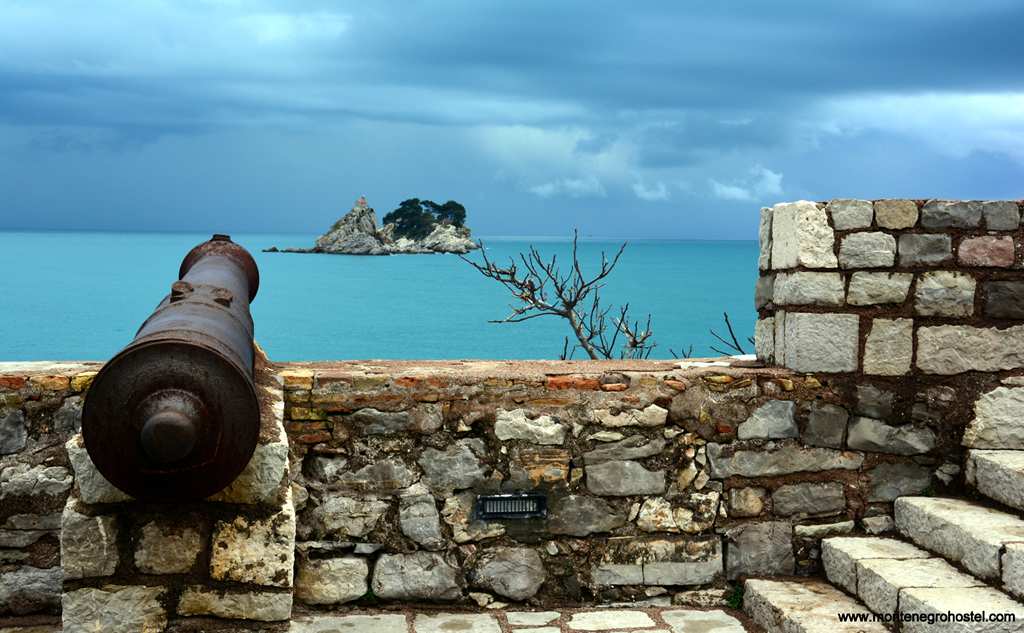
The oldest monuments in Petrovac lie inland from the coast. To find the 4th-century Roman mosaics, the tourist signs won’t be enough, and it is, therefore, best to inquire locally. The two churches, one dedicated to St Elijah (Sveti Ilija) and the other to St Thomas (Sveti Toma), were built in the 15th century but were later the site of the legendary heroic act of priest Rade Andrović. In 1785, Kara Mahmud Bushati, a Turkish pasha from Shkoder, looted and burned the whole of Paštrovići, although he promised not to do so. The priest Andrović decided to take revenge and kill the Turkish villain. While seemingly unarmed, he was allowed into the pasha’s tent, where he took out his concealed gun, but the gun did not fire. He was therefore executed.
REŽEVIĆI MONASTERY
The monastery is located halfway between Sveti Stefan and Petrovac. Coming along the highway from the direction of Budva, it lies on the right-hand side, immediately after the junction for Perazića Do beach, and it is visible from the road. The legend retold from one generation of Paštrovići to the next tells that the monastery was founded next to the main medieval road running down the coastline. By the road stood a pillar and on it a jug with wine for the thirsty travelers, kept full devotedly by Paštrovići clan members. One day in the year 1226, Serbian king Stefan the First Crowned drank from the jug, and its return for this generosity decided to found a monastery here. The second church in the monastery was added by Serbian Emperor Dušan the Mighty in 1351, the same year he granted Paštrovići the rank of nobles of the region. During its history, Reževići remained closely knit with the Paštrović clan, and whenever their freedom was endangered, the monastery suffered as well. The first trouble came in the 1785 campaign of Mahmud Pasha Bushatli when it was destroyed. In 1812, it was burned by the French for opposing their rule and siding with the Montenegrins. The last of the destruction came in 1941 when the Italians pillaged and set it ablaze.
The shady courtyard overflowing with flowers has a souvenir shop, which, amongst other things, also sells stone-pressed olive oil and honey made by monks. The larger of the two monastery churches was built in 1770. It is a typical maritime church of the time, with a sturdy stone exterior and a modest rose window. The unusual belfry with five crosses was added in 1839. Its interior has newly painted walls, and an iconostasis was done by Marko Gregović (1867-1941), an academic painter from Petrovac. The small church was built in the 13th century, but adaptations made through the centuries have blurred its original design. In it, one can see very good frescoes from the end of the 17th century and an iconostasis painted by Aleksije Lazović of Bijelo Polje in 1833. Further to the left of this church, underneath the steps of the monastic residence, stands the only surviving wall of the second, 14th-century church, complete with the frescoes from the period. In front of the monastery complex is a stone-threshing floor with a nice view of the sea.
GRADIŠTE MONASTERY
The monastery is situated 2,5 kilometers from Petrovac on the main road towards Bar. If driving, be prepared for a sharp turn to the left and a steep uphill climb leading between the houses to a parking lot. A short but quite steep walk will take you to the monastery gates. It is not known who or when founded the monastery; tradition holds that it was in 1116, but the first written proof of its existence comes from 1307, when Serbian King Milutin mentioned it in one of his chapters. The monastery was looted several times by Turks, but managed to survive and live through a small artistic renaissance in the 6th century when many prominent artists worked here. In WWII, it was the scene of heavy fighting between the Italians and the Partisans, and after the war, it was abandoned. After the 1979 earthquake, it fell into decay. 20 years later, it was completely renovated. The monastery stands in a prominent position, enjoying fine views of Buljarice Cove, and yet its courtyard with lots of flowers and a drinking well seems a world away from the hustle and bustle of the beaches.
The monastery complex consists of three churches. The church closest to the entrance is dedicated to St Sava, built in 1863 on the spot of an older temple from the 15th century, but with its interchanging rows of red and white stone fits in perfectly with the whole. Inside, there is an interesting iconostasis made by Greek painter Nicholaos Aspiotis. The unusually orientated Church of St Nikolas was built around 1618 by Dioniosije and Stevan Davidović, as stated on the inscription above the entrance. Its interior is entirely covered in wall paintings, the work of the famous priest Strahinja of Budimlje and the painter Jovan in 1620. The frescoes represent episodes from the Old and New Testaments, the Dormition of the Virgin, the Nemanjić rulers, and the large bust of St Nicholas. The fine iconostasis was carved and painted by Vasilije Rafailović of Risan in 1796. On one of the icons, you will notice a dog-headed saint, which was a usual depiction of St Christopher in Eastern Orthodox iconography, where his beastly looks were given contrast to his saintly life.
The third church is dedicated to the Dormition of the Virgin Mary and stands on a mound with a small cemetery. Very small (6 by 4m) and without any outer décor, it is typical for the old village churches of the coastland. The interior was painted by priest Strahinja seemed to prefer smaller, intimate spaces since he made a better disposition of scenes and characters here, producing a harmonious whole ranked as his best work. Among the ecclesiastical themes, we encounter once more the busts of the Nemanjić rulers.
PAŠTROVIĆS AND THEIR BANKADA
The Paštrovićs clan is the largest and the most important one on the Montenegrin coastline. Also, it is very old, being first mentioned in 1355 when some Paštrovićs were noblemen in the service of the Serbian Emperor Dušan. From the beginning of the 15th century, we have records of the 12 families of Paštrovići united into one clan. In 1422, they decided to accept Venetian supremacy and to wage war for her between Kotor and Shkoder, but on condition that the Republic should guarantee their trading rights and a wide autonomy in dealings amongst themselves. This meant above all that the Paštrovićs settled the conflicts between their clansmen in their court called “zbor” ( gathering), “bankada” (from Italian banco-“table”), or “the Place of Justice”.
In dealing with civic disputes, the court used the Code of Emperor Dušan and common law, while in deciding on questions of common interest for the clan, every man had the right to speak out. The Bankada was made up of four judges and 12 “nobles” who were elected for a one-year term on Vidovdan (28th of June), a very important Serb holiday. The court’s patron saint is St Stevan Štiljanović, a late 15th-century duke of Paštrovići, who was initially convened at the Drobni pijesak beach but later also in Sveti Stefan and the Praskvica monastery. Although the Paštrovići were stripped of their rights by the French in 1926. It was renewed in 1999, and nowadays Bankada’s main concern is preserving the old traditions, religious festivities, economic development of the Paštrović area (from Budva to Sutomore), and protection of historical monuments.
Montenegro Hostel Team
BAR
BAR
The city of Bar was founded in 1878 when the Montenegrins acquired this region in a war that devastated the town of Old Bar. It is original name was Pristan (Anchorage), as it was Montenegro's first harbor that developed rapidly after WWII, when it got a new modern harbor, which was connected in 1976 with the Bar-Belgrade railway, which connected all of Montenegro and all of Serbia. Bar is also the only maritime town in Montenegro with a regular ferry line connecting it to Bari in Italy. Today, the town serves as an important traffic center, second only to Podgorica. As a modern city of considerable size, Bar is a good place to stock up on supplies. In the last ten years, Bar has been rapidly developing as a popular tourist place, with several good hotels, and numerous guesthouses and apartments, very often fully booked in the high season.
North of the harbor lies the pleasant Topolica Park, and on its edge, facing the sea and promenade, is the Palace of King Nikola. This nice villa was built in 1885 and is adjoined to a chapel and a winter garden. The palace houses a local museum presenting numerous archaeological findings, the vivid traditional dresses of Orthodox, Muslim, and Catholic from the local area, and a section devoted to the narrow gauge railway Bar-Virpazar, the oldest in Montenegro (1908). Around the palace are planted many exotic trees and shrubs, a gift to King Nikola from around the world. In front of the palace is a long pebbled city beach.
The city is also known for the magnificent Orthodox Cathedral of St. John Vladimir, whose construction began in the late 20th century. The temple is located in the city center, not far from the sea. It has an area of 1200m² and a height of 41 meters. The characteristics of the temple are that 4,860m² were painted with frescoes, a marble iconostasis 18.5m long was made, a floor mosaic of 550m² was laid, and the temple has seven bronze and nine wooden doors. The Ascension of the Lord is painted on the central dome, while in the lower zone of the dome, the Mother of God is painted with 12 apostles, then four Evangelists, which makes a total of 600m² of frescoes. In the center of the narthex, a fresco of the descent of the Holy Spirit on the apostles was painted, and all earthly nations were represented. The temple was built in honor of St. Jovan Vladimir, the first Serbian saint and protector of the city of Bar.
The most important tourist sight in Bar is its predecessor, Stari Bar (Old Bar). It is located to the southeast of the town, on the first slopes of the impressive Mt Rumija. The old, walled part is turned into an open-air museum. Underneath is huddled the inhabited part of the town, immersed in oriental legacy. The hill occupied by the walled town was settled in prehistoric and Illyrian times, but was abandoned during the Roman era when it was moved to the coast, to the same location where modern Bar stands today. With the Avar and Slavic invasions in the 6th century, the Roman population left the shore for the safety of this hill, which they encircled with walls. The Town of Bar became the most important center of Duklja (Doclea), often visited by princes and kings. In 1089, it became the seat of the archbishopric, which still exists to this day. Its name comes from Latin Antibarium (Facing Bari), the town in southern Italy to which it was closely connected by religious affairs and trade. The town reached its heyday during the rule of the Nemanjićs when it doubled in size and population.
Later on, it was squabbled over by several feudal lords until, in 1443, the townspeople decided to take on the protection of the Venetian Republic. The protection worked well for more than a century, during which Bar became an isolated commune, encircled from all sides by Ottoman possessions. Venetian rule ended in 1571 when Bar fell to the Turks. Soon, the churches were turned into mosques, and the remaining population became Muslim. Three hundred years later, the town was besieged and taken by Montenegrins in 1878, after which it gradually lost its importance to its coastal namesake. Careless stocking of gunpowder by the Montenegrin army led to two large explosions (1881 and 1912), which destroyed many of the old monuments. After additional damage was inflicted by the 1979 earthquake. Some parts of the abandoned old town are gradually being repaired and renovated nowadays.
Plenty of interesting fragments are found in The Old Bar, like Roman, medieval, and Venetian inscriptions, coats-of-arms of local families, columns, capitals, etc. Entry to the inside of the walls is gained through an imposing gate near the upper tower. This spacious gate was, until the Venetian renovation, a church standing by the town walls. Today, the entrance contains a relief of St Mark’s Lion and a huge olive press. Facing the entrance, there stands the Omerbašića Mosque, a small structure from 1662. The domed structure next to it is the tomb of Dervish Hassan. In front of the whole complex stands a dry drinking well displaying an Arab inscription. To explore the town, you will need to purchase a ticket. The first building to the left of the ticket office is a 15th-century customs office turned into a small museum with archaeological material and photos of Stari Bar from before and after the earthquake. Further uphill, you will reach the Tatrovica citadel, whose oldest layers date back to the 0th century, but which has been continually rebuilt to the 19th century and was even used by the Italians in WWII as a prison.
From its walls, you can observe the Turkish aqueduct and the old road following the stream of the river Rena deeper inland. In front of the citadel gate stand several surviving walls of the Church of St Francis, and on one of them, there are 14th-century frescoes of two saints. To the left of the citadel, you will pass the old town gate: the part remaining behind you is a 13th and 14th-century enlargement, while you now enter the original town core. On what used to be a small town square stands a modest church and a two-story bishop’s palace, a late Gothic edifice renovated to its original appearance. Behind it is the 14th-century Church of St Veneranda. The path leads you to the southern plateau where the cathedral dedicated to St George, the patron of the town, once stood. The main street descending downwards passes the former Church of St Catherine, which used to stand on the vaults above the street. In the middle of the ruins of Stari Bar are the 17th-century Turkish baths. The Turkish clock tower (late 16th century) is close to the palace, where the southern town gate used to be. By the western tower, the 15th-century Duke’s Palace (in ruins) and the unidentified church can be found.
The area around the town of Bar is an olive-growing region and has been since time immemorial. A living monument to this useful tree and the craft of its cultivation is The Old Olive Tree (Stara maslina) in the suburb of Mitrovića. It is estimated that it was planted around the time of Christ’s birth, which makes it one of the oldest olive trees in the world. The remarkable thing is that, although cracked and curved, it still bears fruit. The Old Olive Tree has grown into one of the symbols of Bar, and the area around it has been smartened up.
SUTOMORE
Sutomore is a small tourist spot 10 km away from the city of Bar, with its favorable connection with the hinterland by train, especially with Podgorica, which also makes it very popular among tourists. Sutomore has 1,250m of sandy beach, several hotels, and numerous houses that offer rooms for rent. The pleasant scenery is highlighted by the sides of Mt Sozina (805m) towering steeply behind it. The area surrounding Sutomore, known as Spič, was once characterized by small country churches used by both Orthodox and Catholics, forming a large majority. During the Venetian and later Austrian domination, no matter how few Catholics lived in a village, the service had to be held regularly, and therefore, many village churches were shared by these two confessions. The only remaining example of this phenomenon is St Tekla, to the east of Sutomore. This modest edifice in the middle of the local cemetery was built in the 13th century. Inside the church, on the left-hand side is a small iconostasis for the Orthodox, and on the right an altar for the Catholics.
ENVIRONS
On Ratac, the first promontory to the south of Sutomore, stand the ruins of the Benedictine abbey known as Bogorodica Ratačka (Our Lady of Ratac). The monastery was founded at the beginning of the 11th century by Italian Benedictines who originally dedicated it to St Michael. It soon became one of the most important sacral sites of Duklja (Doclea) and was often visited by its rulers, but more importantly, it was also a prominent place of pilgrimage. Its already large estates were further expanded in the 13th century by Serbian queen Jelena, and from then onwards the monastery held control of most of Spič and a good part of Paštrovići as well. The illustrious abbey met its end in 1553 when the Turks sacked it.
The imposing edifice was laid to ruins in the fighting between Venetians and Turks in 1571. The last destruction came in WWII when a part of it was adapted for Italian bunkers. Today, its extensive ruins testify to its former grandeur. The most notable among the ruins are those of the main church, 27 long with its walls in rows of red and white stone and three apses. The ruins of the fortress Haj Nehaj stand on an isolated and inaccessible hill (255m above sea level) to the north of Sutomore. To get to it, take the road to Zagradje village. The steep climb passes through a forest and ends up in front of the gate Haj Nehaj. This impressive stronghold was built by the Venetians in the mid-16th century as the main defensive point of Spič.
Montenegro Hostel Team
ULCINJ
ULCINJ
The southernmost town on the Montenegrin coast has a distinguishing Oriental flavor and feel to it, partly because of the long Ottoman presence here ( till 1878) and, more because this is the only coastal town with a Muslim Albanian majority. This makes Albanian the first language here, and most of the signs are bilingual. Ulcinj is one of the oldest cities in the Adriatic. It was probably founded as a colony of the ancient Greeks from the town of Colchis (in present-day Georgia). The Romans captured the town in 167 BC. Destroyed in the barbarian onslaughts, the town was rebuilt by Emperor Justinian in the location of today’s Old Town. In the Middle Ages, bishoprics and important trading centers exported wood and salt from the surrounding area. In the time of the Serbian Nemanjić dynasty, it was often visited by heirs to the throne and queen mothers, whose presence made it into a sort of unofficial capital. Later on, it was an important stronghold of the Balšić family. In 1422, it came under Venetian protection, which lasted until 1571 when it was conquered by the Ottomans.
Soon afterward, in 1580, the town was captured by Uluz-Ali, an Algerian pirate and later viceroy of his province. His rule began more than a century in which Ulcinj was the dreaded seat of pirates, who with their light vessels attacked not only Venetian or other Christian trades but also Turkish ships in the Adriatic. The local pirates were known far and wide and acquired vast wealth in valuables, especially from slave trading. It is speculated that the famed Spanish writer Cervantes was sold as a slave to Algerians in Ulcinj when he fell captive. The corsairs also kept good connections with other parts of the Ottoman Empire and especially with their “colleagues” from Africa. In this way, Ulcinj also settled several black slave families. This era ended in 1737 after the Sultan banned corsairs on the Adriatic and destroyed their fleet. In 1878, the town was taken by Montenegrins, becoming a valuable harbor for their previously landlocked state.
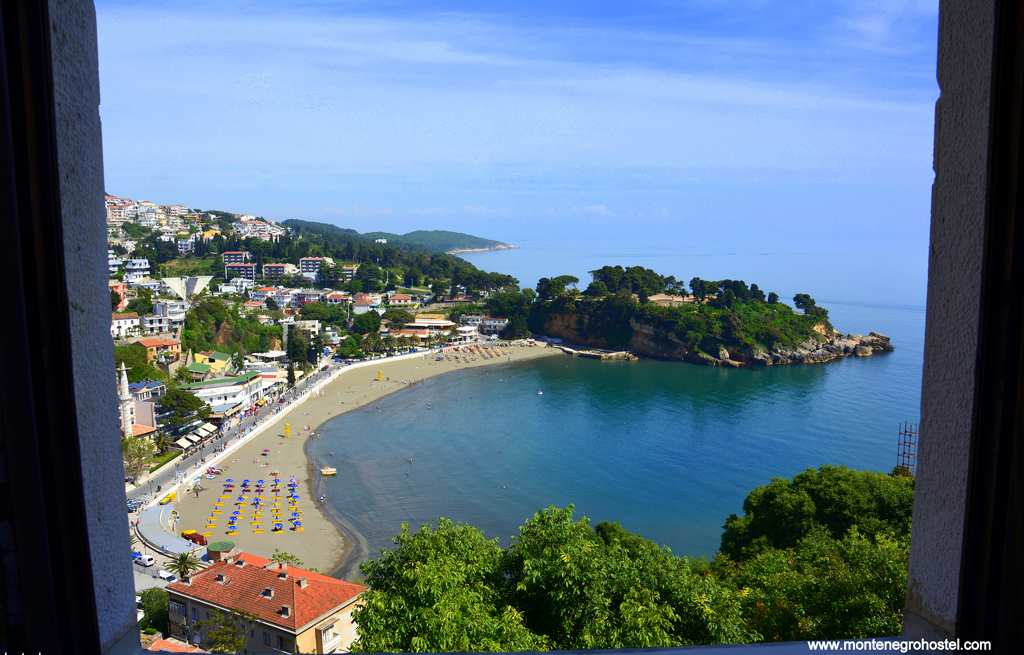
The city wraps around and climbs a hill, standing in its midst. The area most visited by tourists is Mala plaža (Small Beach) and the adjoining Old Town. The Small Beach is a 360m long sand cove between two promontories. On its northern side rises the cliff on which stands the Old Town, a muddle of small streets framed by both old and new houses. The tall Venetian walls are its best-preserved part and make a dramatic impression atop the high cliffs. There are two entrances inside its walls, one ascending from the cove and the other from the top of the hill. Close to the latter is the former Slaves’ Square, where the unfortunate were sold to their masters. It stands pretty, drinking well from 1749 with an Arabic inscription. Enclosed by a fence is the local museum, which is housed in several buildings. The shapely medieval church was built in the early 13th century and was converted into a mosque in 1693, as demonstrated by the ruins of the minaret found next to it. The archaeological collection with the Greek red-figure vases, Venetian cutlery, and Turkish jugs is displayed in the church. Of special interest are the 9th-century ciborium from Ulcinj, a sacrificial altar dedicated to Artemis Elafavolis, patroness of deer hunting (5th century BC), and a cameo with a depiction of Athena.
The former Bishop’s Palace (13th century) is nowadays an ethnographic collection with varied costumes of local ethnic groups. To the right of the entrance is the building of the Venetian customs office, which is today used by the museum management. Inside it, one can see the scale model of the town. Rising next to the church is the 15th-century Balšić tower, on whose top floor resided Sabetha Zwi, and where two Jewish altars still stand preserved. The tower leans on the walls of the inner citadel. Just outside the city walls lies the Orthodox church St Nicholas, built in 1890 on the site of a medieval monastery and surrounded by a pleasant olive grove. Further down, you will find Pasha’s Mosque, built in 1719 with Turkish baths next to it. At the top of the long 26th November Street stands the Namzgah Mosque (1828) and the 18th-century Clock Tower. On the other side of the Small Beach is a headland descending to the sea in a cascade of flat rocks turned into small beaches. Further south stretches a series of similar rocky inlets shaded by a wonderful pine forest. One of these is called Women’s Water got its name after the sulphuric mineral spring that presumably helps infertile women.
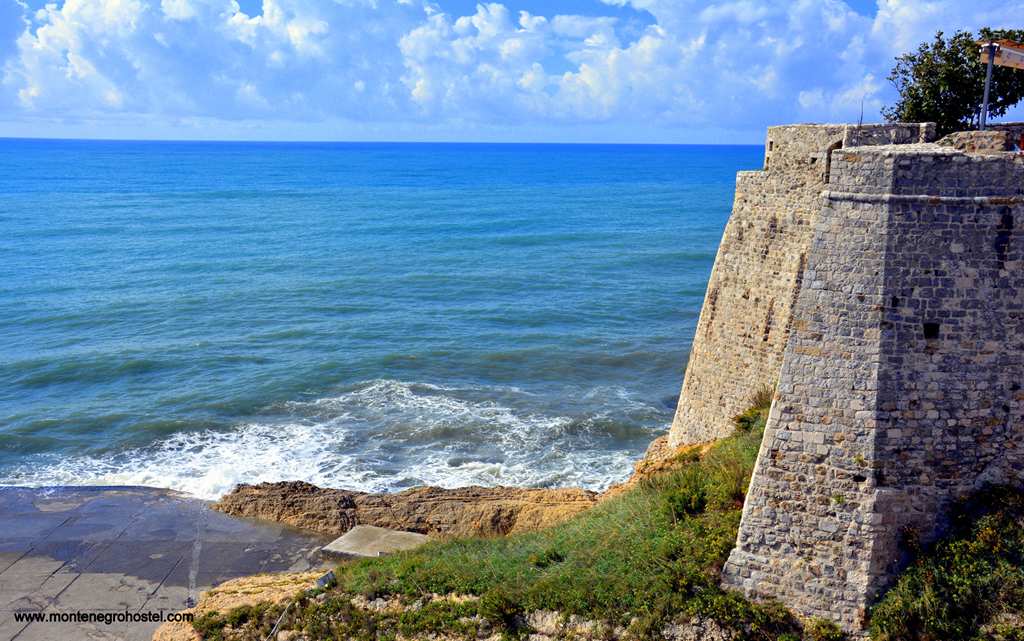
ENVIRONS
The road south of the town leads across the Milena Canal (named after King Nikola’s wife) to the vast Ulcinj saltpans. On the canal, one can see a kalimere, a traditional fishing device with a net on the end of a long pole designed to catch fish. From here stretches the long Great Beach (Velika plaža). With a length of 13 km of fine gray sand, it is the largest beach in Montenegro. The seawater is very shallow, and on windy days, when the waves are high, it is forbidden to swim here. The beaches can be reached by some roads branching off the highway. There are numerous hotels, guesthouses, and bungalows on both sides of the highway. Cafés, restaurants, and fully equipped beach bars are the waterfront and have their parking lots, sunbeds, parasols, and plenty of offers for water activities. The sand of Great Beach has therapeutic traits, especially helpful for curing rheumatism and similar ailments.
THE FALLEN MESSIAH
Sabetha Zwi (1626-1676) was the best-known and most successful of the Jewish “messiahs” of the 17th and 18th centuries. He was born in Smyrna and spent his youth in Jerusalem and Thessaloniki, but later moved to Germany and Poland. This adventurer studied Kabala and led an ascetic life, preaching in poor Jewish communes and eventually pronouncing himself to be a messiah. He profited from the art of painting, sending his pamphlets across Europe. His prophecy marked the year 1648 as the Second Coming, but when this turned out to be incorrect, he announced that the world would end in 1666. That year, he hired a boat from Hamburg and, with a group of followers, set off for the Holy Land (Palestine). A part of his scheme was to be crowned the King of the Jews by the Ottoman Sultan. However, the Ottomans seized him and convicted him as a false messiah. He and his men offered to die or save their lives by accepting Islam. They opted for the latter, forming a specific Muslim sect with many elements of Judaism. Under his new name, Mohamed Effendi-Zwi spent his last years under house arrest in Ulcinj, making the town seat of his sect famous in Jewish history.
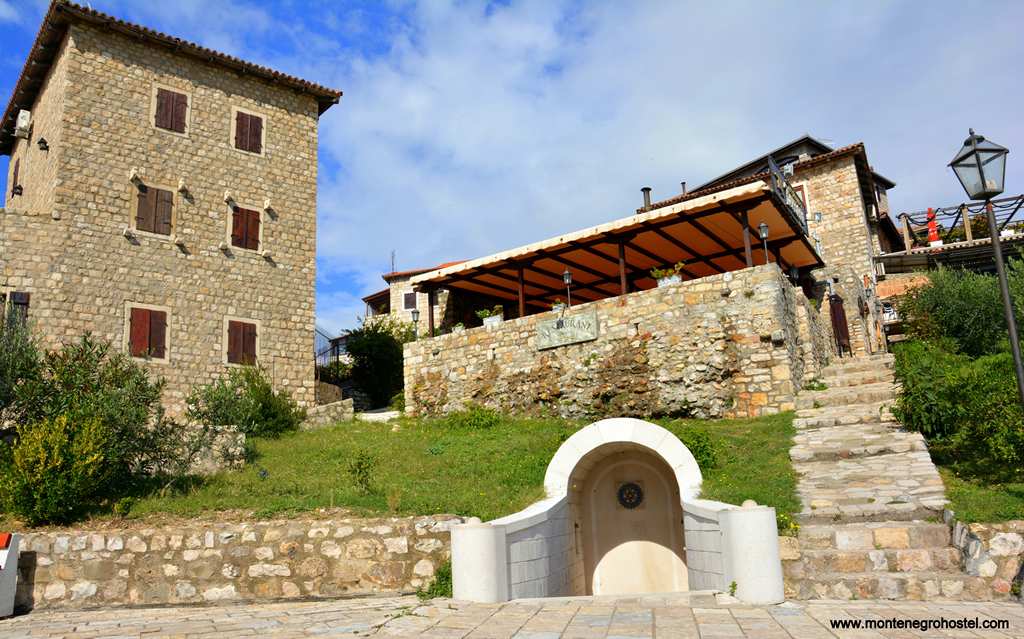
SVAČ
The ruins of this medieval town lie some 22 km northeast of Ulcinj, in the direction of the Sukobin border pass with Albania. When you reach the village of Vladimir (named after St Jovan Vladimir, who reigned in this region), take the right turn at the main crossroad and follow the road that leads towards the Šas village. Look for the ruins on a hilltop on your right or for the black stone monument by the road, this is the best place to leave your car. The walking path leads to the top of the hill, and it will take you some 10 minutes to cover it. Svač was mentioned already in the 8th century as the seat of the local bishop. It was less known in times of Duklja (Doclea) but prospered in Nemanjić Serbia.
The town was destroyed in 1242 when fierce Mongols swept through the Balkans, looting and pillaging. However, it was quickly rebuilt soon after, particularly due to the help of Serbian King Uroš and his queen Jelena, who came from a catholic French Anjou family. The town dwindled in size and importance, and already at the beginning of the 15th century, it was recorded as a village. Its existence was ended when, in 1571, the Turks captured and destroyed it, never to be rebuilt again. On your way up, you will first reach the remarkable ruins of the Church of St Mary, which was once part of the city's suburbs. It was built as part of a Franciscan monastery in the mid-14th century. The surviving western façade and the square apse have Gothic windows, while the portal is of Romanesque style with small decorative heads on the consoles.
On top of the hill, the most notable ruins are those of the Cathedral Church dedicated to St John, which was built in the year 1300. On the other side of the hill lies the Šasko Lake. It is connected by a small canal to the Bojana River. It is 1,5 by 3,2km in size during the summer, but in the winter it doubles its size, expanding to the surrounding hills. The lake is rich in fish (carp, perch, mullet), attracting birds, especially during their autumn migrations to the south.
Montenegro Hostel Team
ADA BOJANA
ADA BOJANA
This unusual river island (ada) lying between two branches of the River Bojana is the southernmost point of Montenegro. It is a heaven for nudists and for all those who like a free and carefree culture (FKK). Yet, nudity is bountifully rewarded with its untamed nature and feeling of isolation from the world, which leaves a permanent impact on all those who visit it. The island’s origin is an interesting story in itself. It came to be after a merchant ship sailing in 1858 towards the city of Shkodra sank in the mouth of the river Bojana, gradually the wreck collected sand around it until the river was forced to split its course.
The result is a sand island covered in low shrubs except for these sides close to the river that have more verdant vegetation. 3 km of Ada's beach is covered by fine sands washed by the high waves that are given impetus by the present breeze. This fact makes it popular with wind and kite surfers, although their clubs are located on the southern tip of Velika plaža (Grand Beach). However, the number one sport here is beach volleyball played for fun by almost everyone, either on the sand or, due to the very gradual descent into the sea, in knee-deep water.
You can roam around the island dressed, but to bathe on the beach, you will have to undress. Possibly the nicest spot for swimming is at the northern tip of the beach where fresh river water mixes with the salty sea, forming brackish water that attracts not only swimmers but also a colony of seagulls. Possibly the nicest spot for swimming is at the northern tip of the beach where fresh river water mixes with the salty sea, forming brackish water that attracts not only swimmers but also a colony of seagulls. The only approach to Ada Bojana is from the Ulcinj side, where a bridge linking it to the mainland stands. On both of its sides, there are several seafood restaurants rendered by many as the best in Montenegro, not only for their fresh fish but also for the special kind of easygoing clientele. Amongst this merry group of eateries, many are built on stilts above the river next to kalimera fishing nets.
Montenegro Hostel Team
